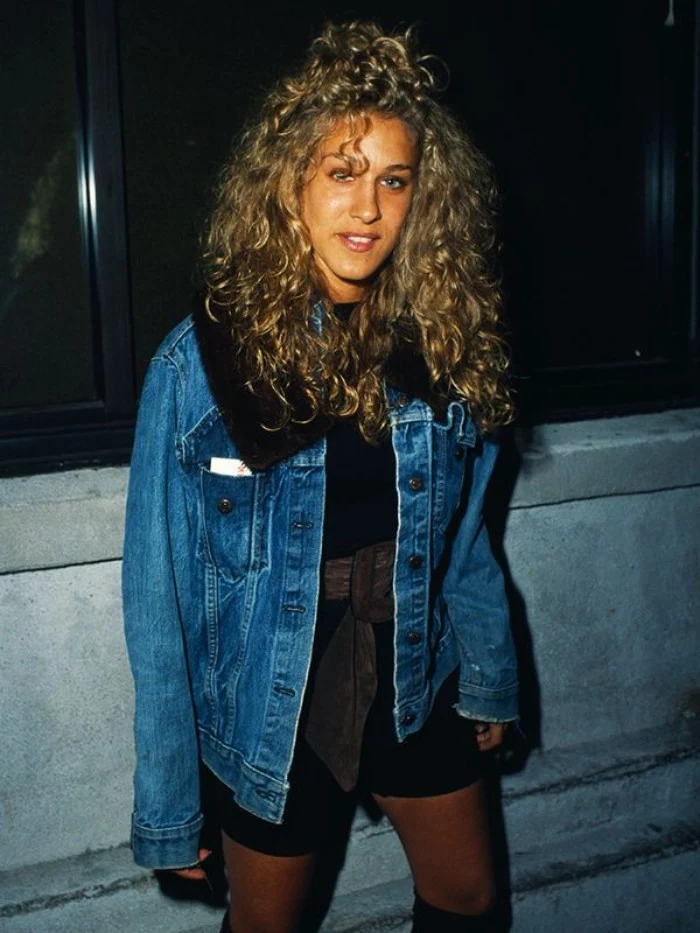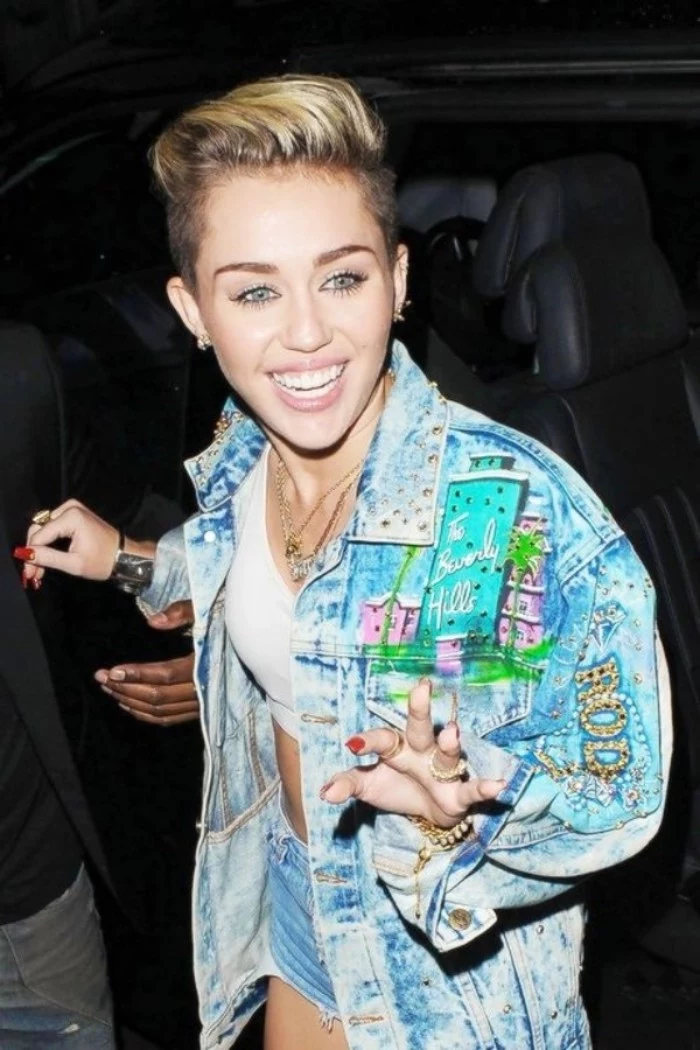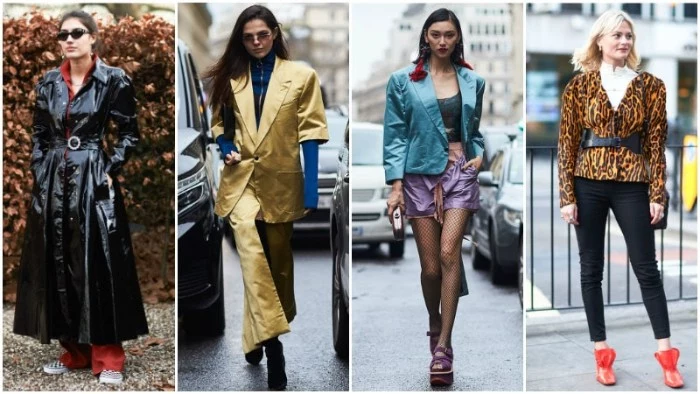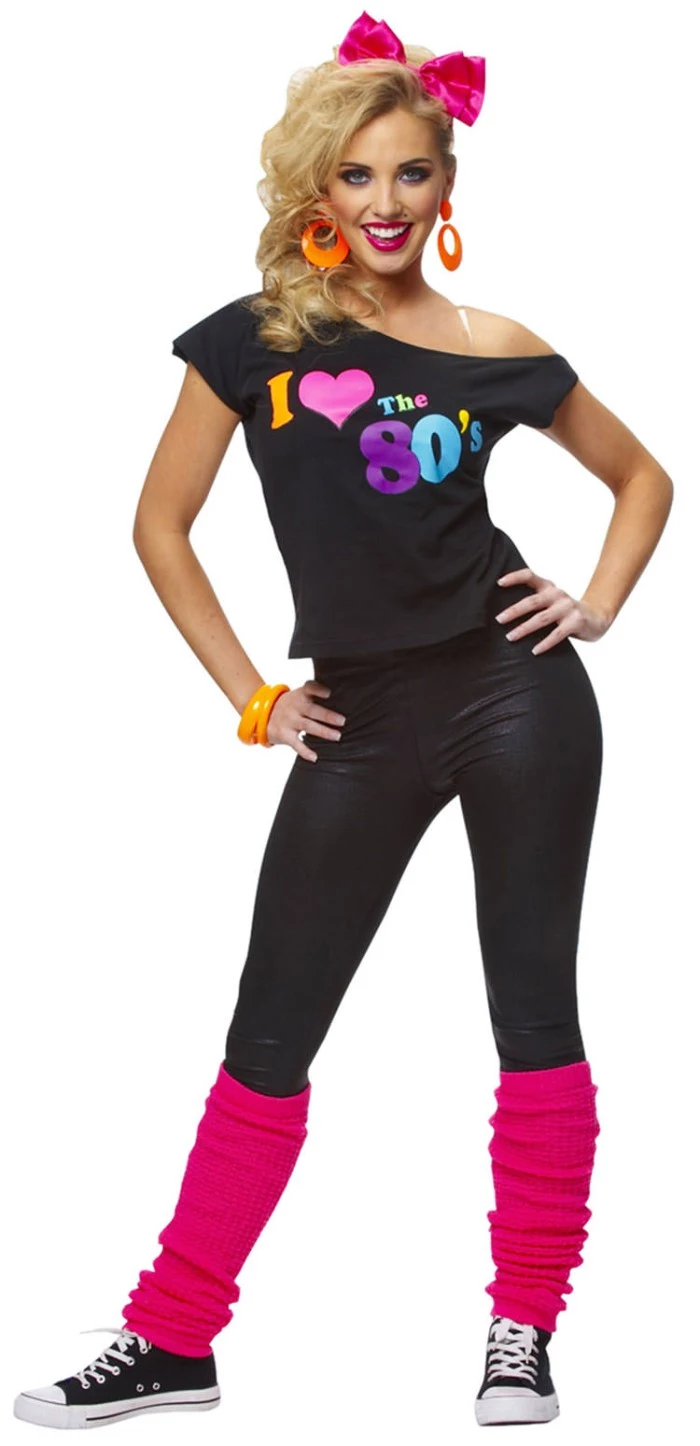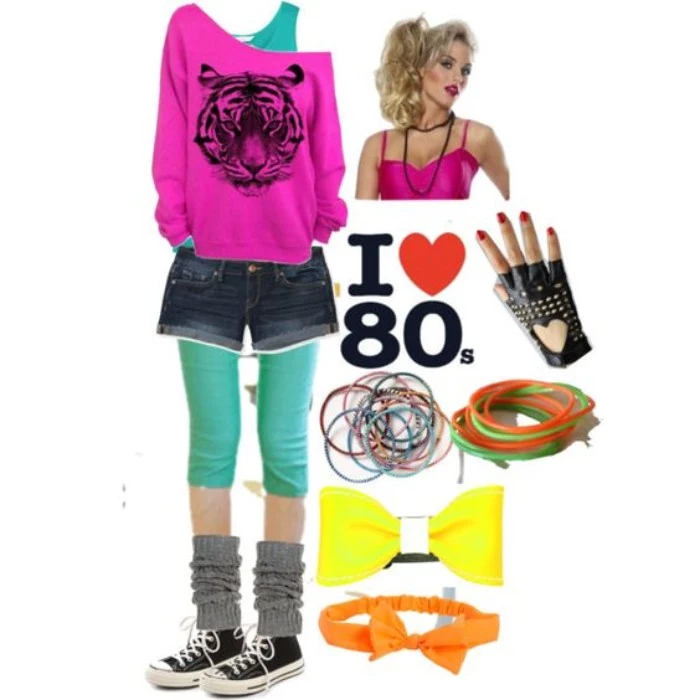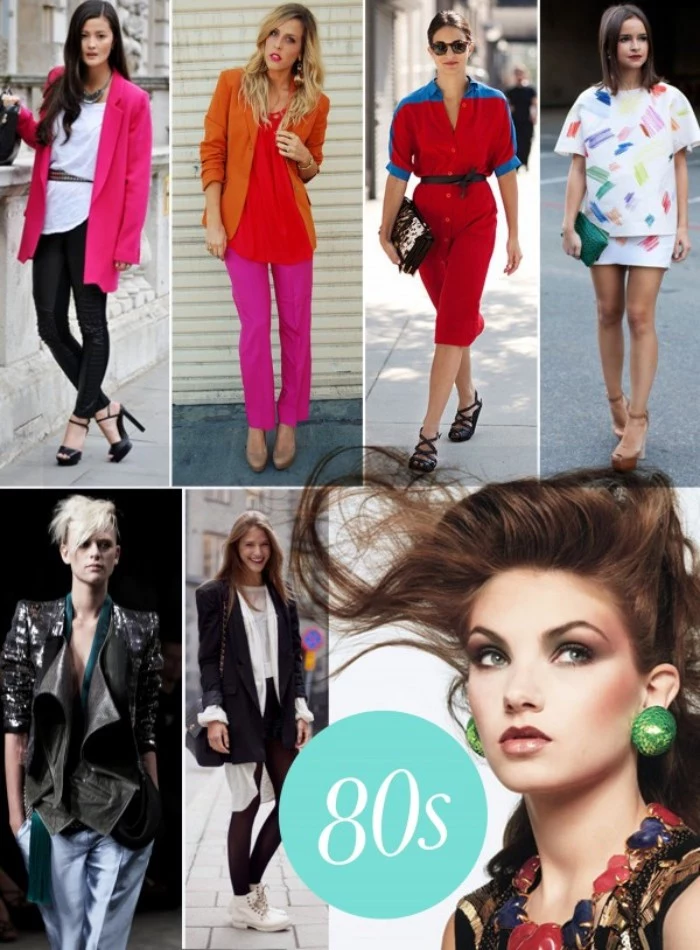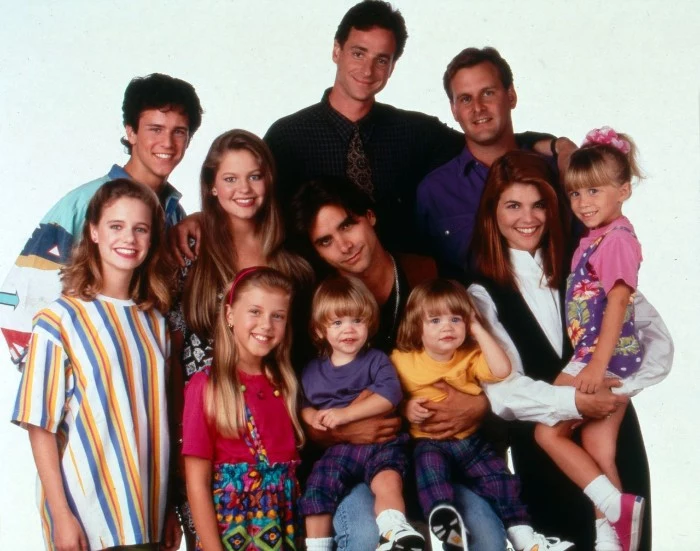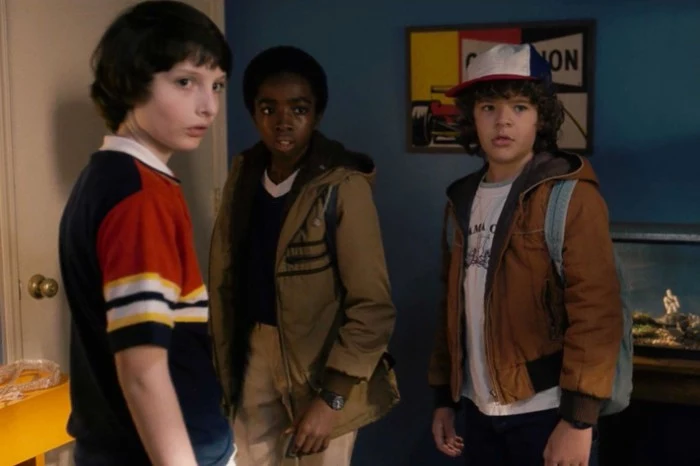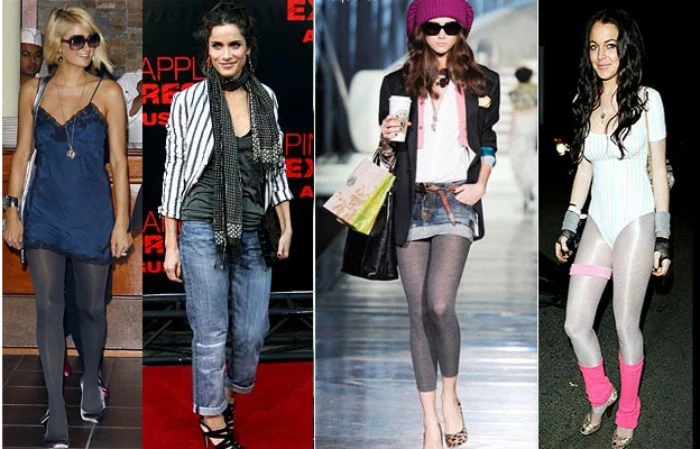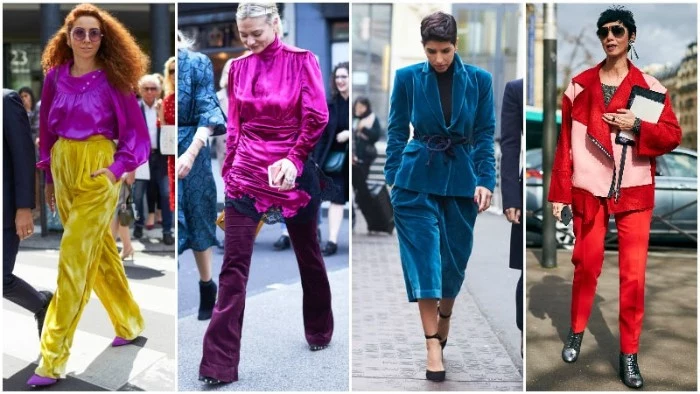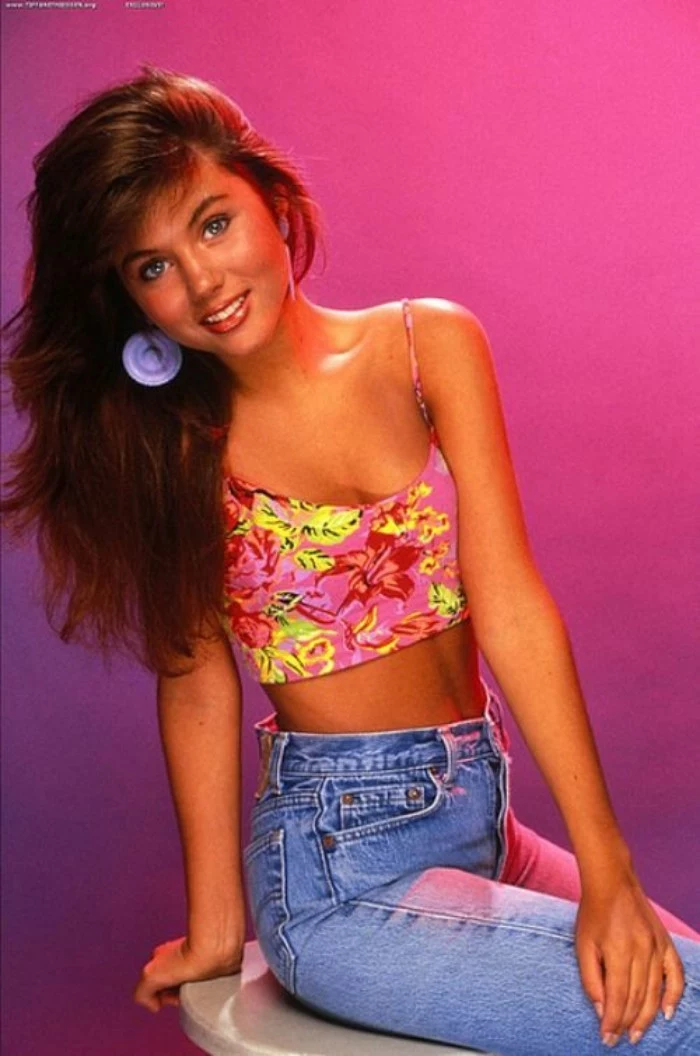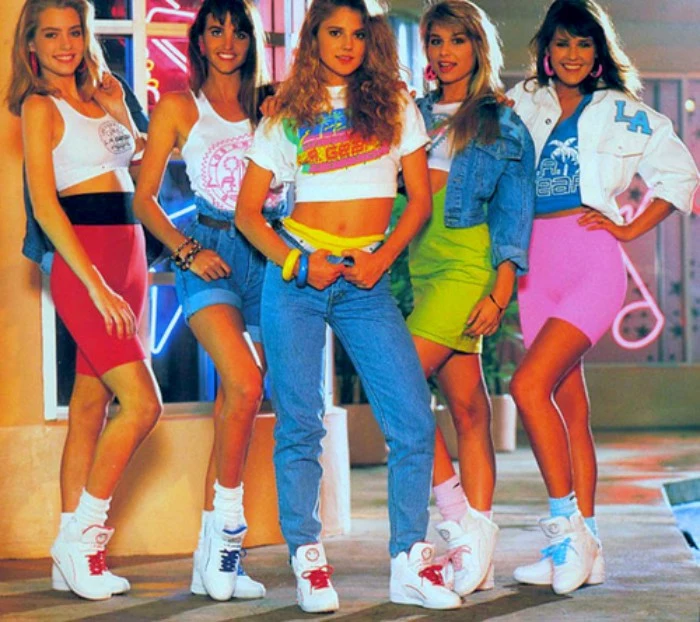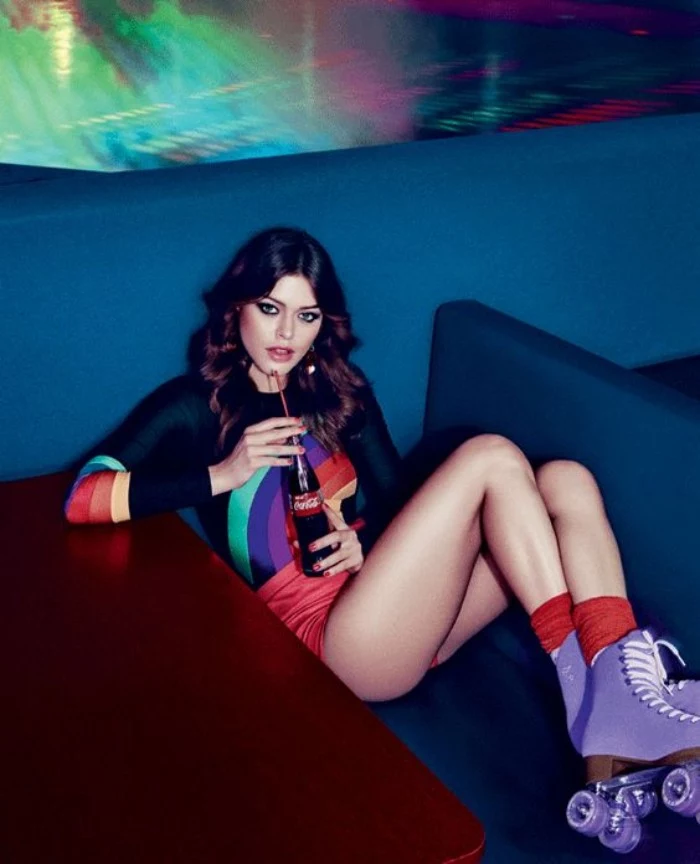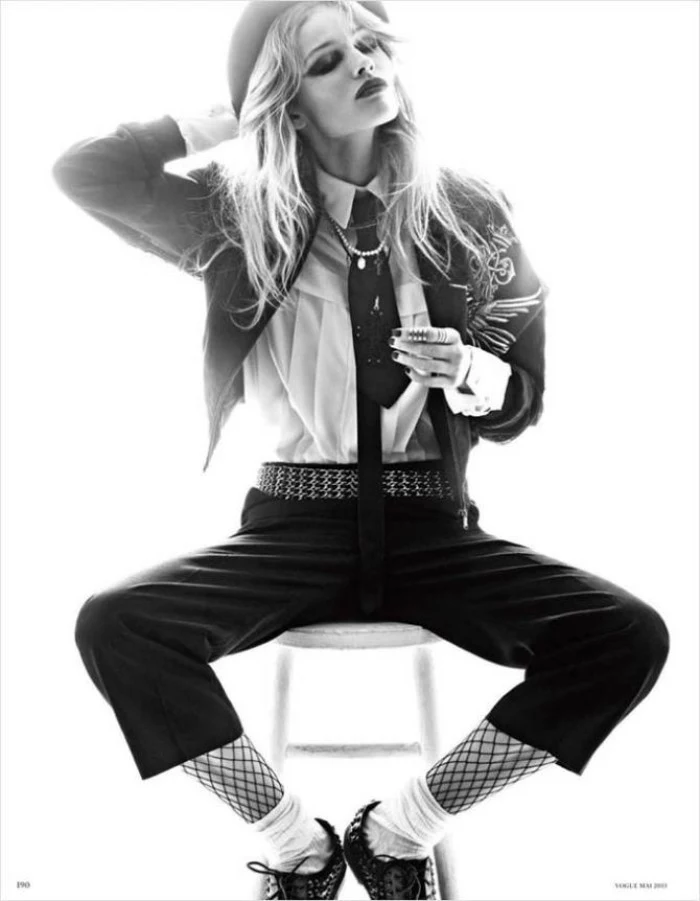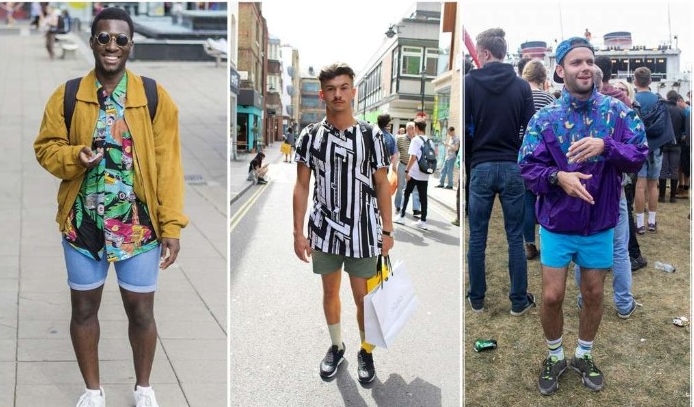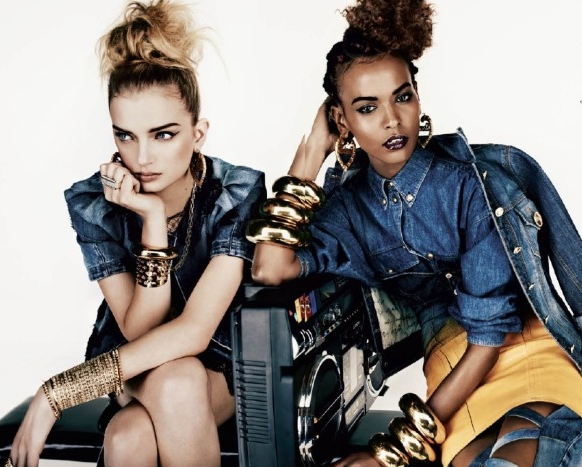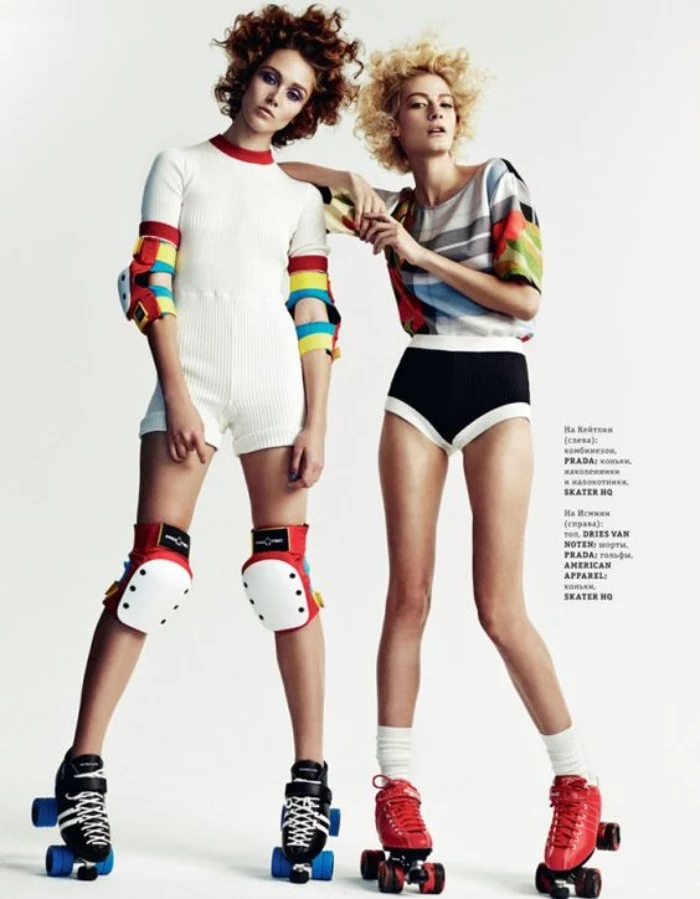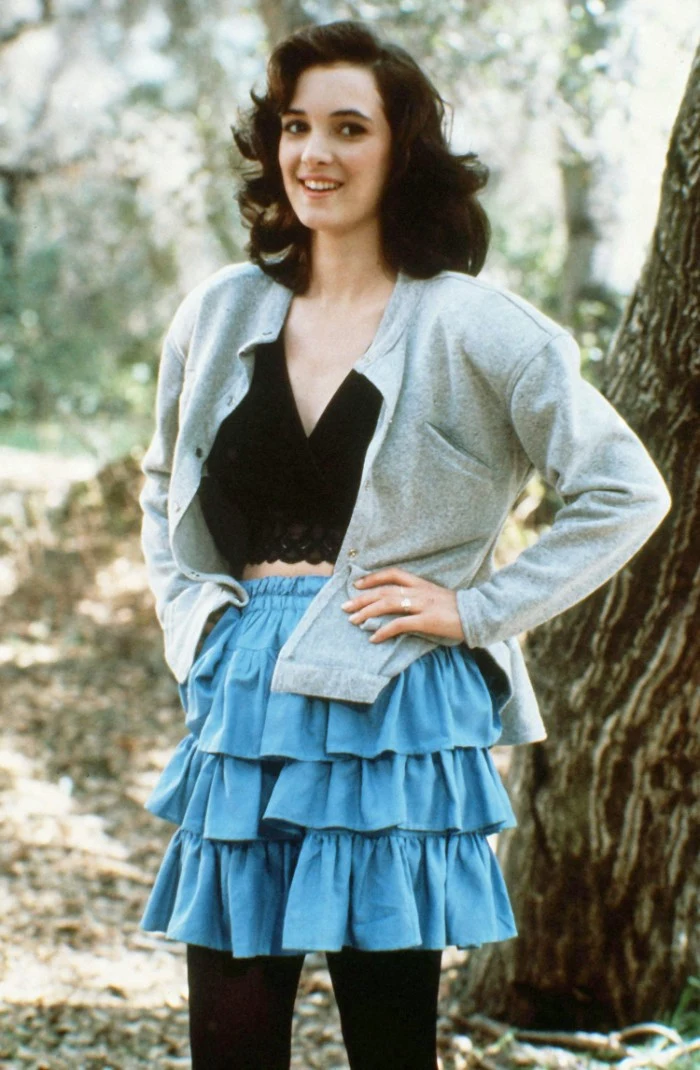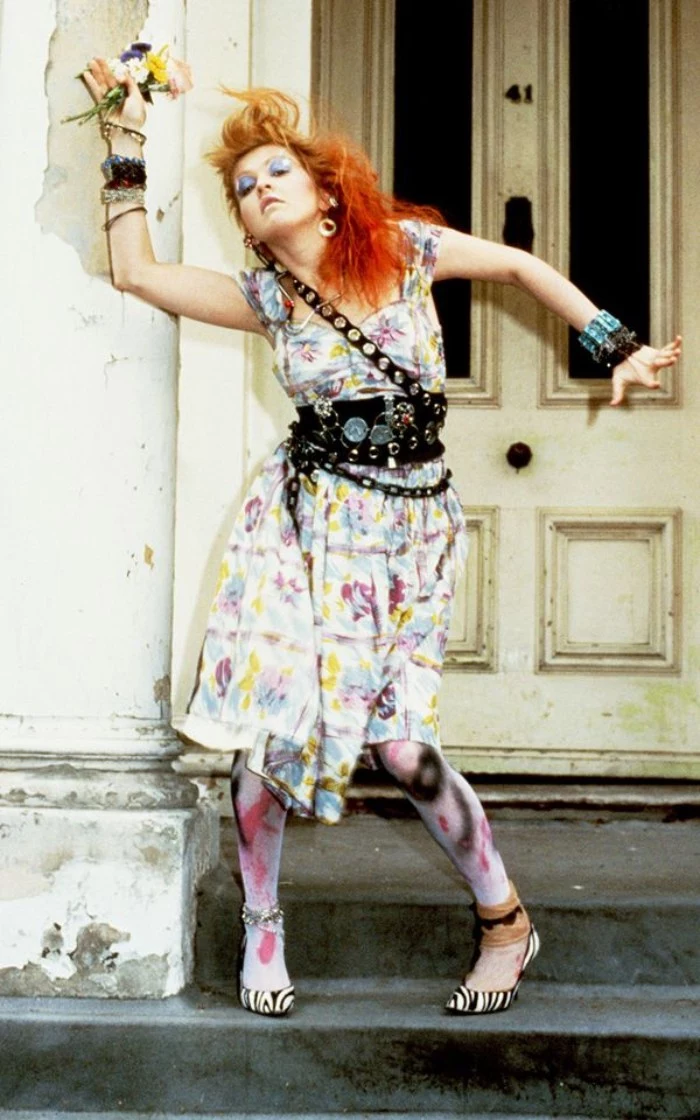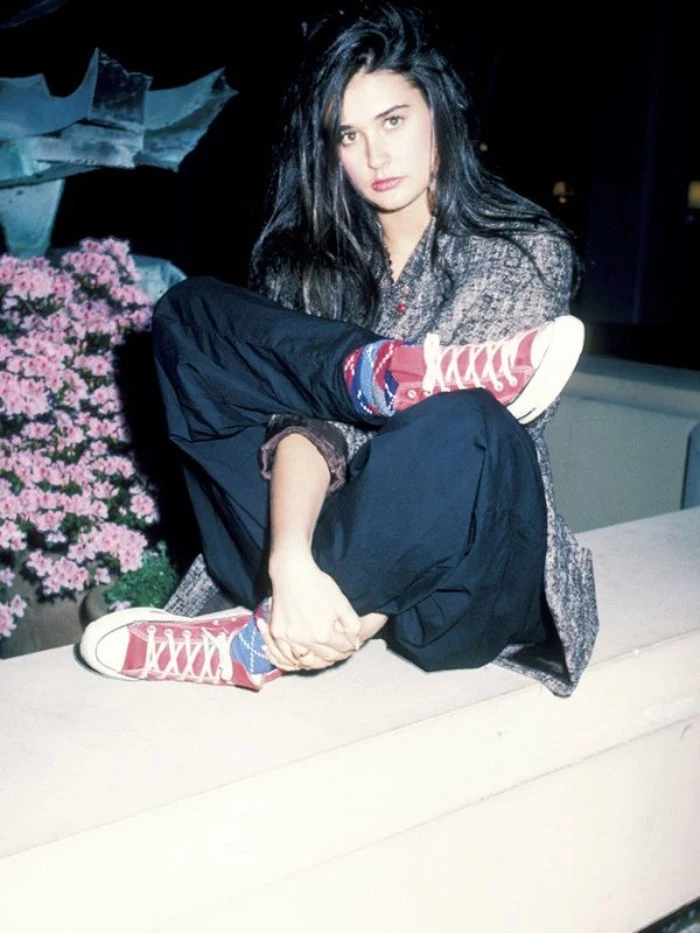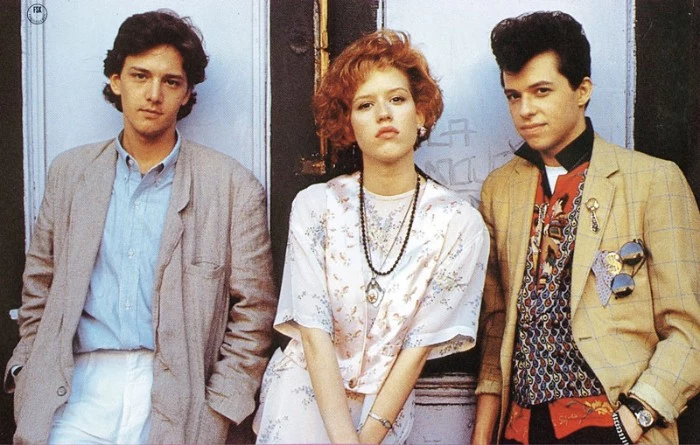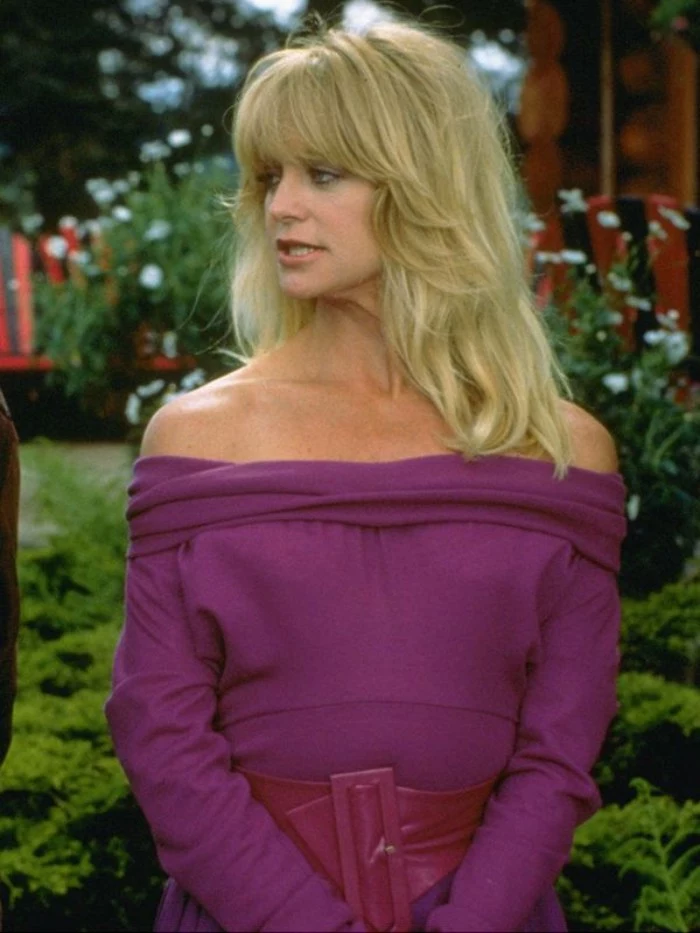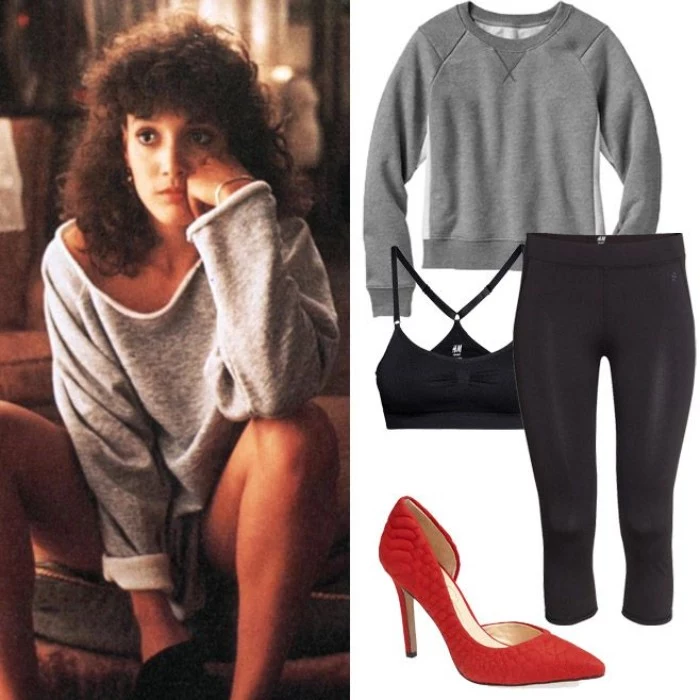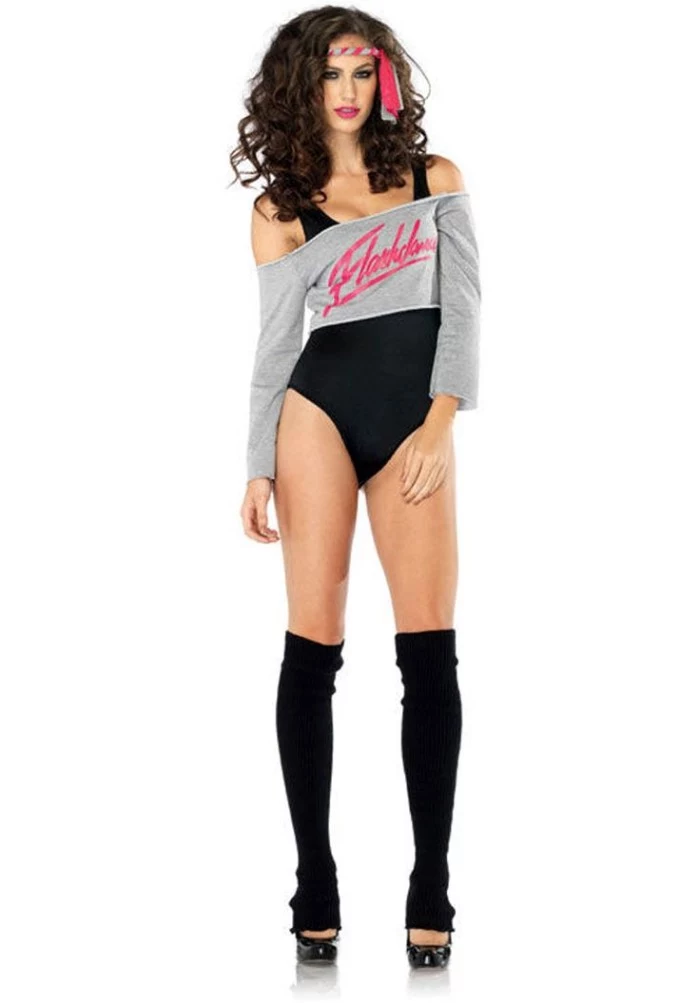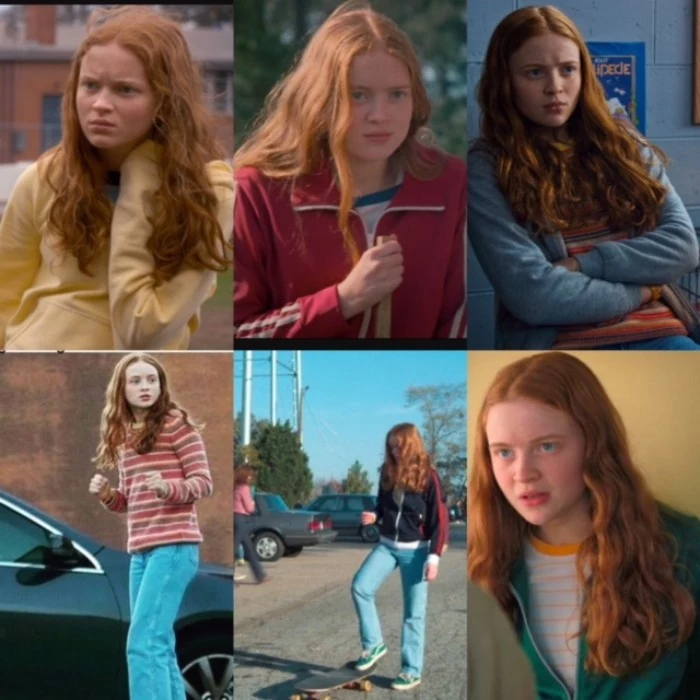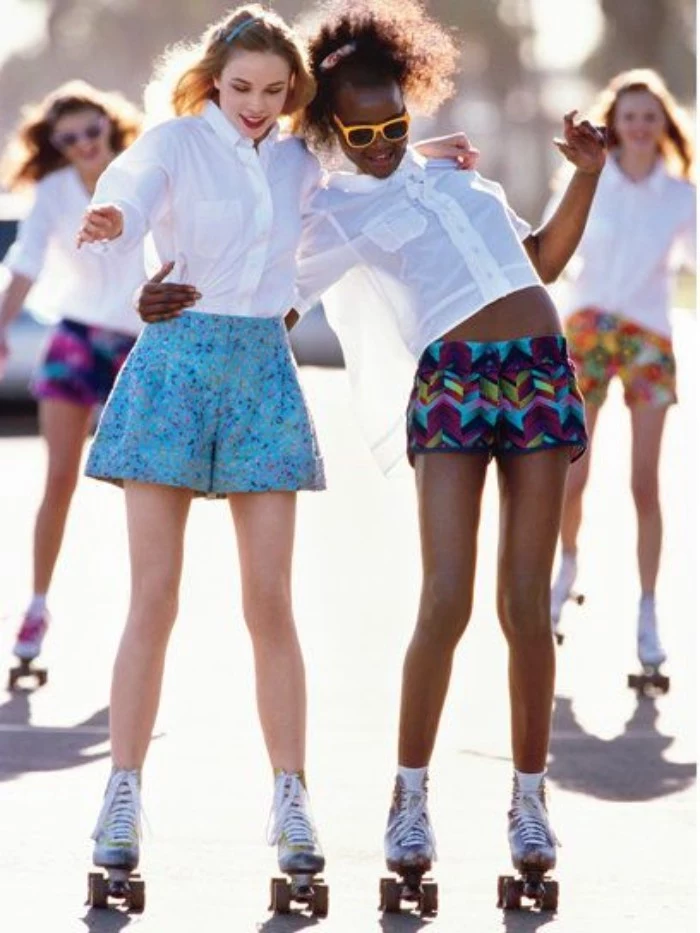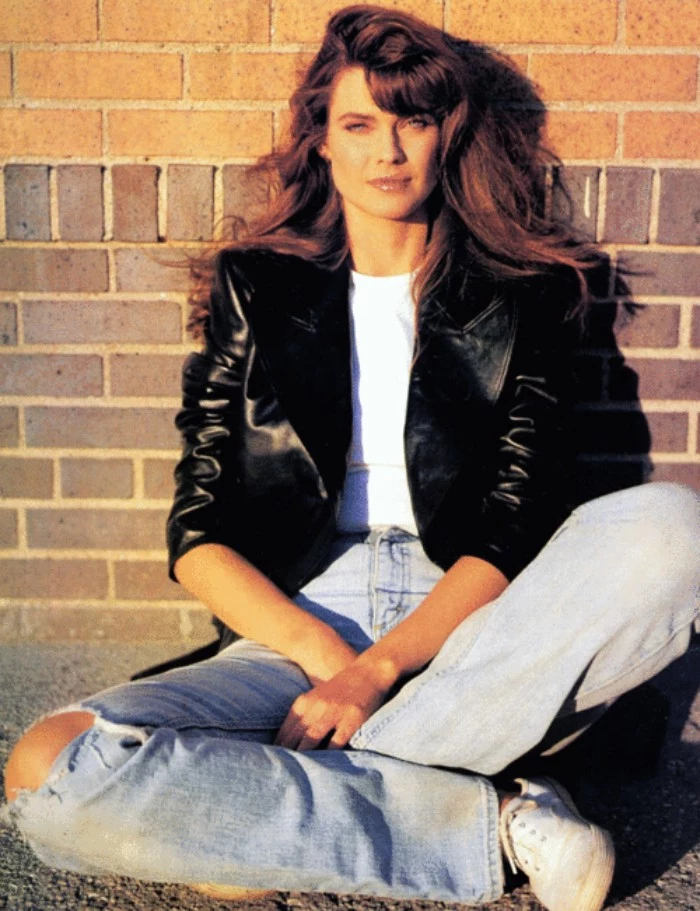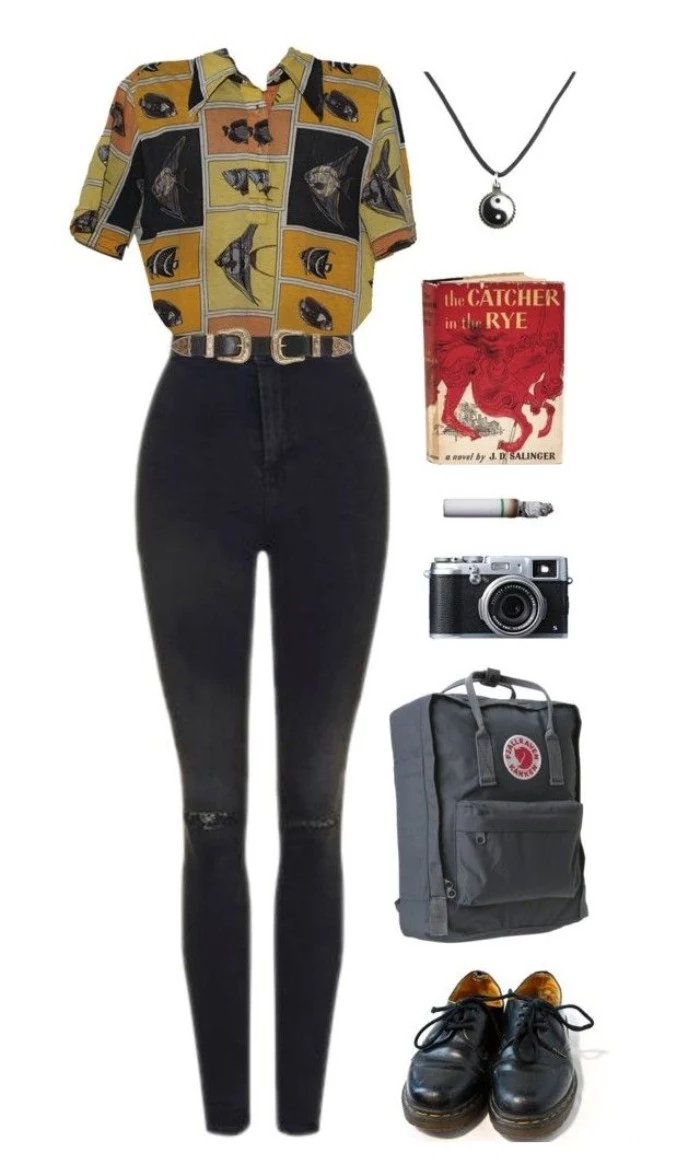A Hands-On Guide to Finding and Wearing Iconic Vintage Styles
After spending more years than I can count working with vintage clothing—everything from sourcing for film sets to helping designers find inspiration—one era comes up more than any other. It’s a period that often gets boiled down to a caricature of big hair and neon colors. But honestly, when you get your hands on the actual garments, you start to understand the real story they tell. It was a time of huge cultural and economic shifts, and you can feel it in the fabrics, the construction, and the wildly different looks that all fought for space on the street.
In this article
I’ll never forget the first time I handled an authentic power suit from that period. The sheer weight of the wool and the architectural stiffness of the shoulder pads were a revelation. This wasn’t just a jacket; it was a piece of armor for someone stepping into a new, demanding world. Understanding this decade’s clothing isn’t just about nostalgia. It’s a masterclass in how culture, technology, and money shape what we wear.
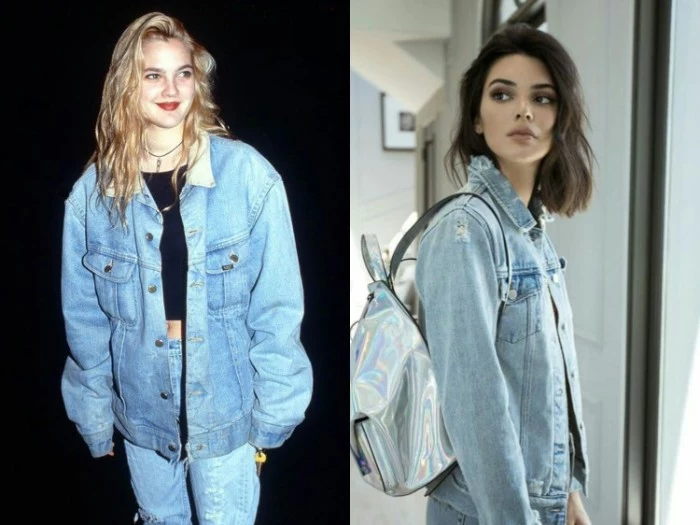
So, this guide is built from years of handling, repairing, and studying these pieces. It’s what I share with anyone who wants to look past the stereotypes and see the real craftsmanship and innovation of the era—and maybe even rock these looks today.
The Materials That Made the Look
The bold aesthetic of that time was only possible because of some very specific textiles. Some were new on the scene, others were just being used in totally new ways. If you want to identify a true vintage piece from this period, understanding the material is your first step. It tells you everything about the garment’s purpose, its original price point, and its place in the culture.
Lycra and Spandex: The Fitness Boom’s Best Friend
The fitness craze that swept the nation wasn’t just a trend; it was a movement completely fueled by one miracle material: spandex (often known by its brand name, Lycra). Before this, workout clothes were usually made of cotton or wool. Think about that for a second… they were baggy, got heavy with sweat, and didn’t offer much freedom of movement. Spandex changed the entire game.
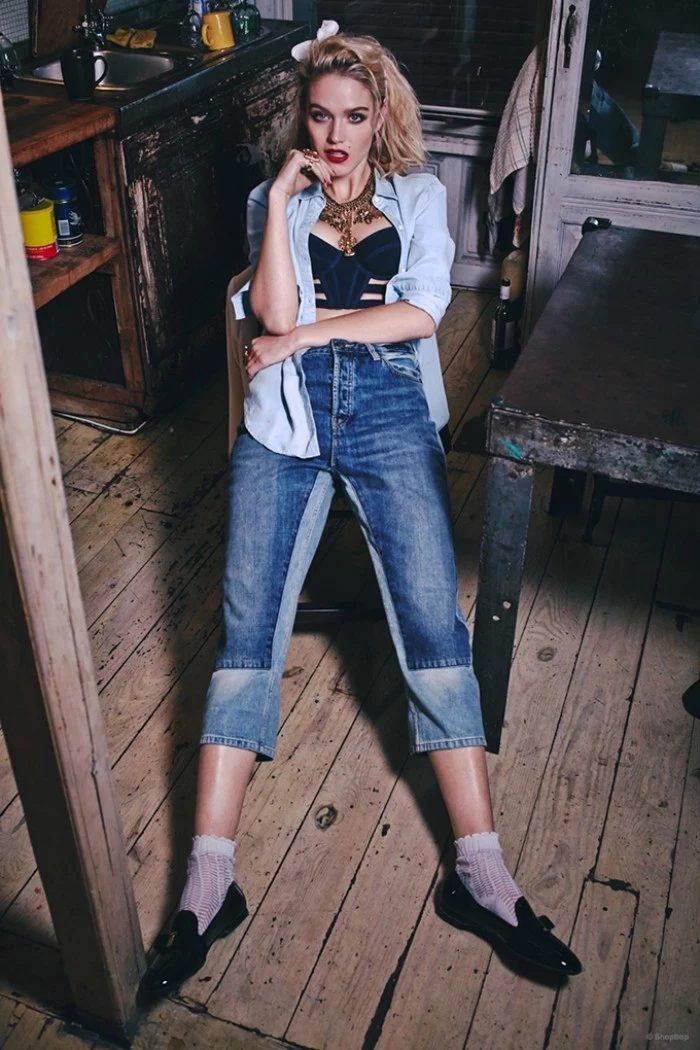
Its secret sauce is its incredible elasticity. A single fiber can stretch to several times its length and snap right back to its original size without losing its shape. When designers started weaving it with other fibers like cotton or nylon, they created fabrics that were form-fitting, supportive, and let you move however you wanted. An authentic leotard from this time will often have a tag specifying a blend, like 85% nylon and 15% spandex. That 15% was the sweet spot for getting the right stretch without feeling totally compressed. Oh, and that iconic high-shine finish? That came from the nylon content, giving it that futuristic, slick look.
Polyester and Nylon: The Soundtrack of Casual Style
The tracksuit and the windbreaker were the unofficial uniforms of casual wear back then. The material that made it all happen was polyester, often blended with a healthy dose of nylon. These synthetics were super cheap to produce, incredibly durable, and could be dyed with vibrant colors that just weren’t possible with natural fibers. Plus, screen-printing logos and graphic designs was a breeze on those smooth surfaces.
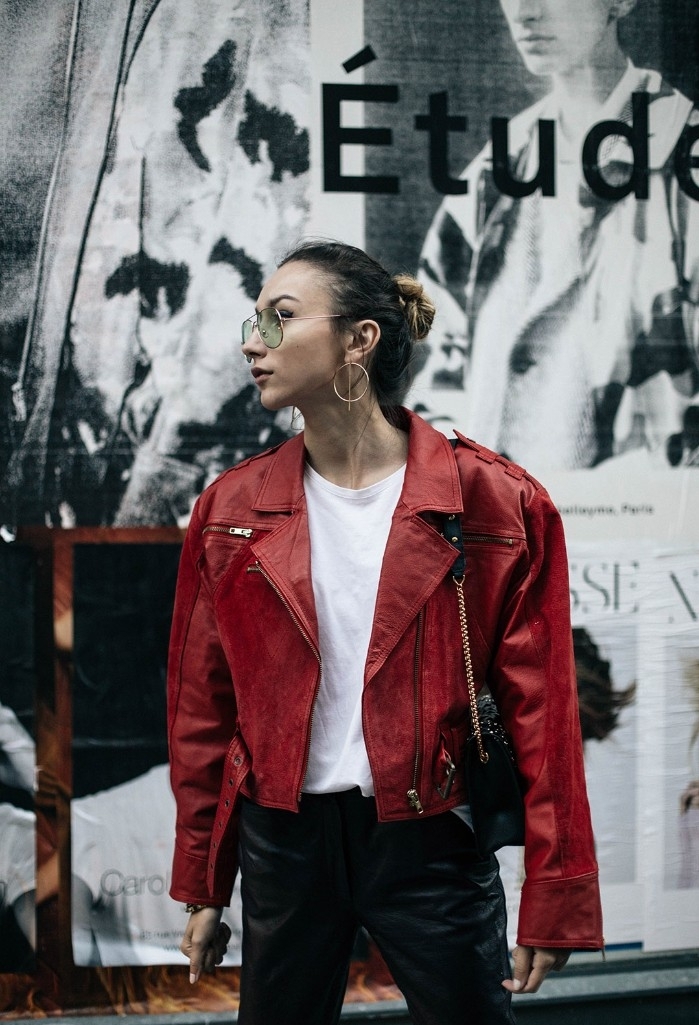
By the way, one of the most distinct sensory details is the sound of a vintage nylon tracksuit. That signature “swish-swish” is something I literally listen for when authenticating pieces. Modern tracksuits are often made from softer, quieter knits. To find the real deal, hunt for classic sportswear labels—the ones with logos you’d recognize from old-school hip-hop videos and sports movies.
Denim: Tortured for Fashion’s Sake
Denim during this period went through some serious abuse. The two main treatments you’ll see are stone washing and acid washing, and while people mix them up all the time, they are totally different.
Stone washing was a physical process. Jeans were tossed into massive industrial washing machines with large, rough pumice stones. The stones literally beat up the fabric, softening it and stripping away some of the indigo dye for a naturally faded, worn-in look right off the rack.
Acid washing, on the other hand, was purely chemical. Fun fact: it didn’t actually use acid. Jeans were soaked in a chlorine solution, and then pumice stones pre-soaked in a bleaching agent were added to the mix. As the stones tumbled, they created that iconic, splotchy, high-contrast pattern. You can often feel that the fabric on a true acid-washed jacket is a bit thinner and weaker in the bleached spots. It was a destructive process, but it gave us one of the most memorable looks of the decade. Expect to pay between $30 and $70 for a good jacket, depending on its condition and brand.
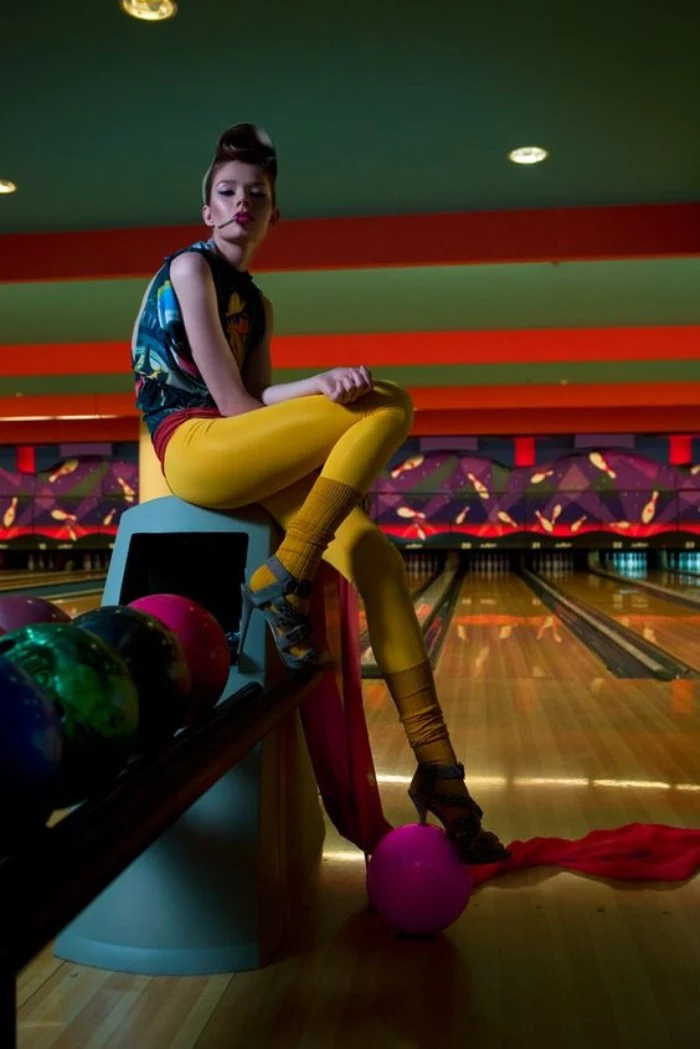
How to Spot the Real Deal: My Thrifting Checklist
When you’re out hunting at a thrift store or flea market, it’s easy to get overwhelmed. Here’s a quick mental checklist I run through to spot authentic pieces from this era.
- The Tag Test: First thing I do is check the care and origin tag. Look for “Made in USA,” “Made in Korea,” or “Made in Taiwan.” Also, check the fabric content. A high percentage of polyester, nylon, or a specific spandex blend is a great sign.
- The Weight Test: Pick it up! Real vintage denim and wool are surprisingly HEAVY compared to their modern counterparts. A power suit jacket should have some real heft to it.
- The Sound Test: This one’s for windbreakers and tracksuits. Bunch up the fabric and listen for that classic, unmistakable “swish-swish” sound. If it’s quiet, it’s likely a modern piece.
Deconstructing the Silhouettes (and How to Wear Them Now)
This period wasn’t about one single look. It was a clash of powerful subcultures, each with its own distinct uniform. Getting the details right is key.
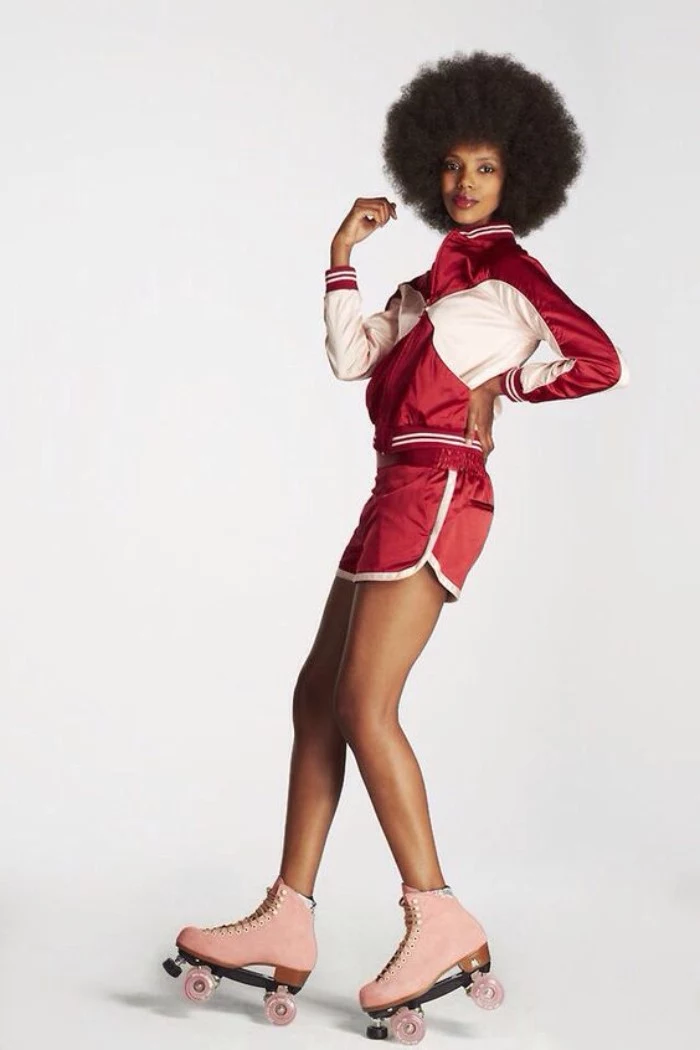
1. Power Dressing: The Corporate Armor
This look was all about projecting authority and ambition. It was the uniform for a new wave of professionals making their mark.
The entire silhouette was built around the jacket’s shoulder pads. And we’re not talking about the subtle little things you find today. These were dense, foam structures designed to create a hard, commanding shoulder line. High-end versions had pads that were beautifully sculpted and integrated right into the jacket’s construction, while cheaper ones just had simple foam crescents tacked into the seam. The jacket was often double-breasted and long, hitting at the mid-thigh. To soften the harsh lines, it was typically paired with a silk or polyester blouse—often one with a floppy “pussy-bow” tie at the neck—and a slim pencil skirt or pleated trousers.
- How to Wear It Today: The secret is to break up the suit. Ditch the matching skirt and throw that amazing, shoulder-padded blazer over a simple, modern t-shirt and your favorite pair of jeans. It’s all about mixing the vintage hero piece with a contemporary base.
- What to Pay: You can find a fantastic, no-name but authentic wool blazer for $40-$80 at a good vintage store. For a high-end, designer-quality piece with serious construction, you could be looking at $500 or more.
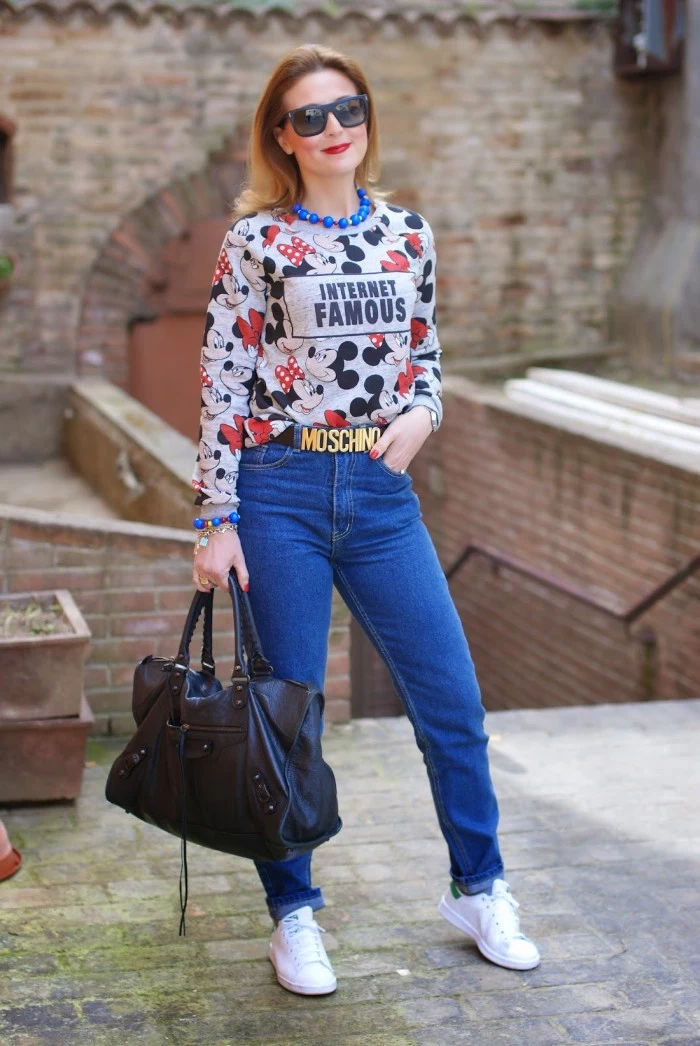
2. The Preppy Uniform: Clean-Cut and Classic
On the complete other end of the spectrum was the preppy look. It was about effortless, old-money classicism, and the materials reflected that. Think natural fibers and timeless cuts.
The key pieces were crisp cotton polo shirts, classic khaki trousers, and cozy cable-knit sweaters, often made from lambswool or Shetland wool. It was a uniform built on quality basics. Look for iconic sportswear outfitters known for their classic, clean aesthetic. The silhouette was relaxed but neat—never sloppy. It was the antidote to the era’s more aggressive and flamboyant styles.
Heads Up! How to Care for Your Vintage Finds
You found the perfect piece, now what? These materials are decades old, so you can’t just toss them in the wash.
- That Shiny Spandex/Lycra: NEVER, ever put it in a hot dryer. Heat is the enemy of elasticity and will permanently kill the stretch. Your best bet is to gently hand wash it in cold water and let it air dry flat.
- That Acid-Washed Denim: Remember, the fabric has already been chemically weakened. To help it last, always wash it inside out on a gentle, cold cycle, and hang it to dry instead of machine drying.
- Wool and Polyester: Vintage wool can hold onto that “old closet” smell. A great trick is to spritz it lightly with a mix of cheap vodka and water (about 50/50) and let it air out. It sounds weird, but the alcohol kills odor-causing bacteria without leaving a scent. For old polyester, a gentle wash is usually fine, but always air dry to be safe.

So, Where Do You Actually Find This Stuff?
Finding these gems is half the fun! Your best bets are a mix of online and in-person spots.
Online marketplaces like Etsy and eBay are goldmines. The trick is to use specific search terms. Instead of just “vintage jacket,” try “80s style double breasted blazer,” “vintage nylon windbreaker,” or “acid wash denim jacket.”
Don’t sleep on your local options, though. A good rummage through a Goodwill or a Salvation Army can turn up incredible finds for just a few bucks. For more curated selections, check out consignment shops and dedicated vintage boutiques in your area. You’ll pay a bit more, but the pieces are usually cleaned and in better condition. Happy hunting!
Inspiration Gallery
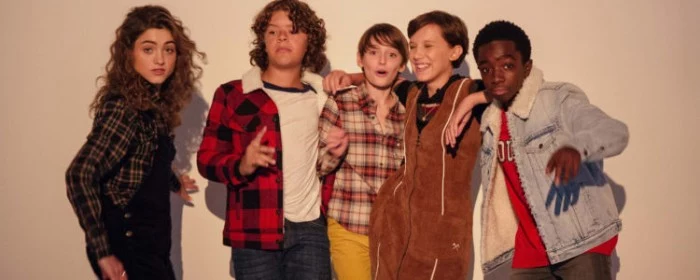
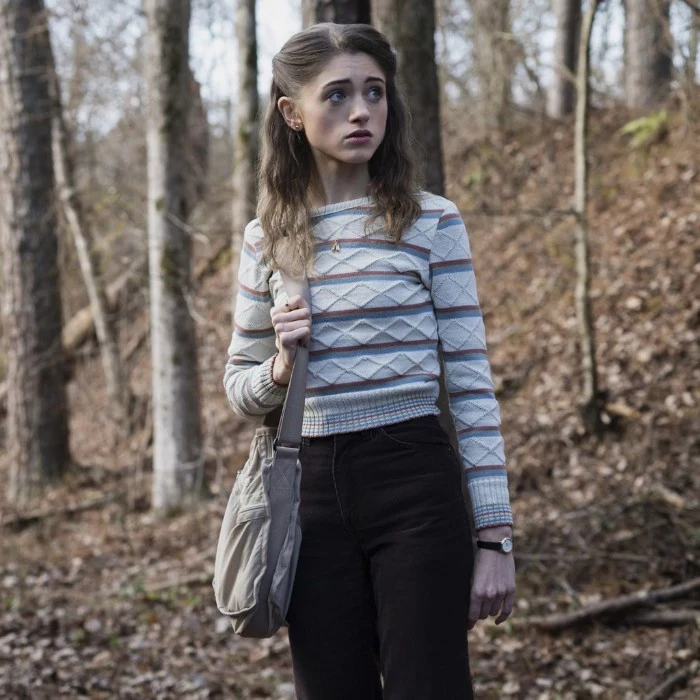
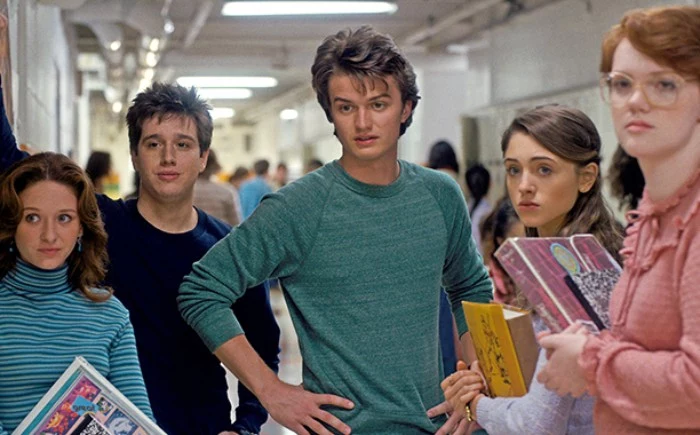
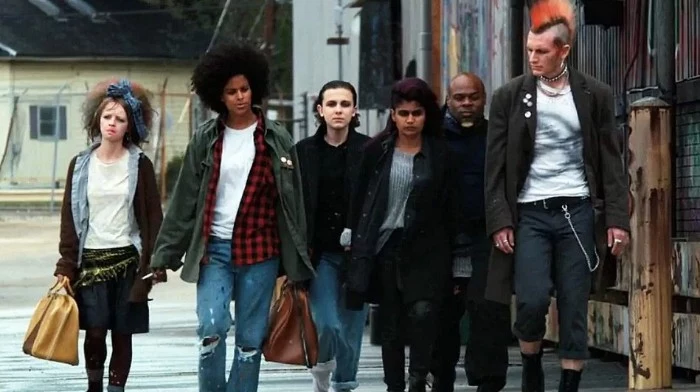
The secret to authentic ’80s accessorizing often lies in a single, revolutionary item: the Swatch watch. Launched in 1983, its affordable plastic design and endlessly changing, colorful faces made it possible to own multiple watches to match different outfits. Finding a working vintage Swatch today is like finding a time capsule for your wrist, an instant nod to the decade’s playful consumer culture.
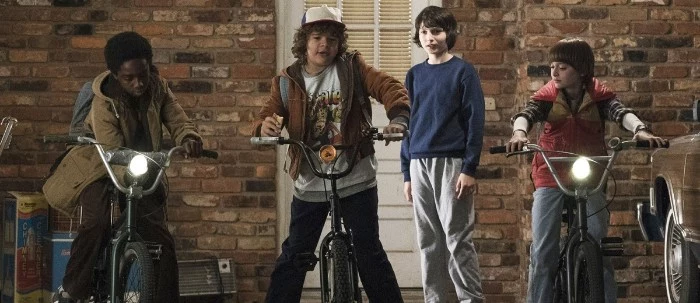
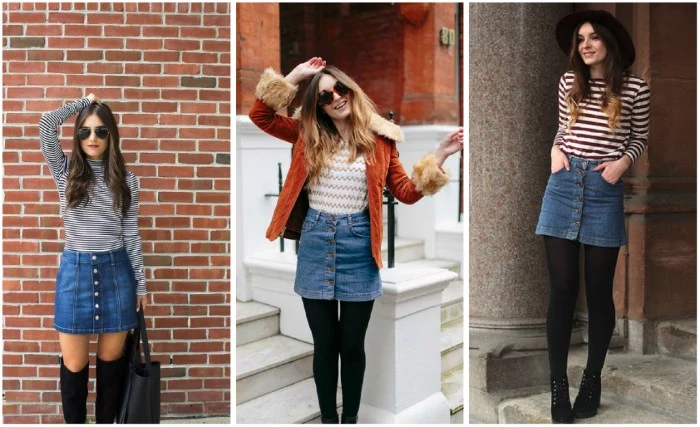
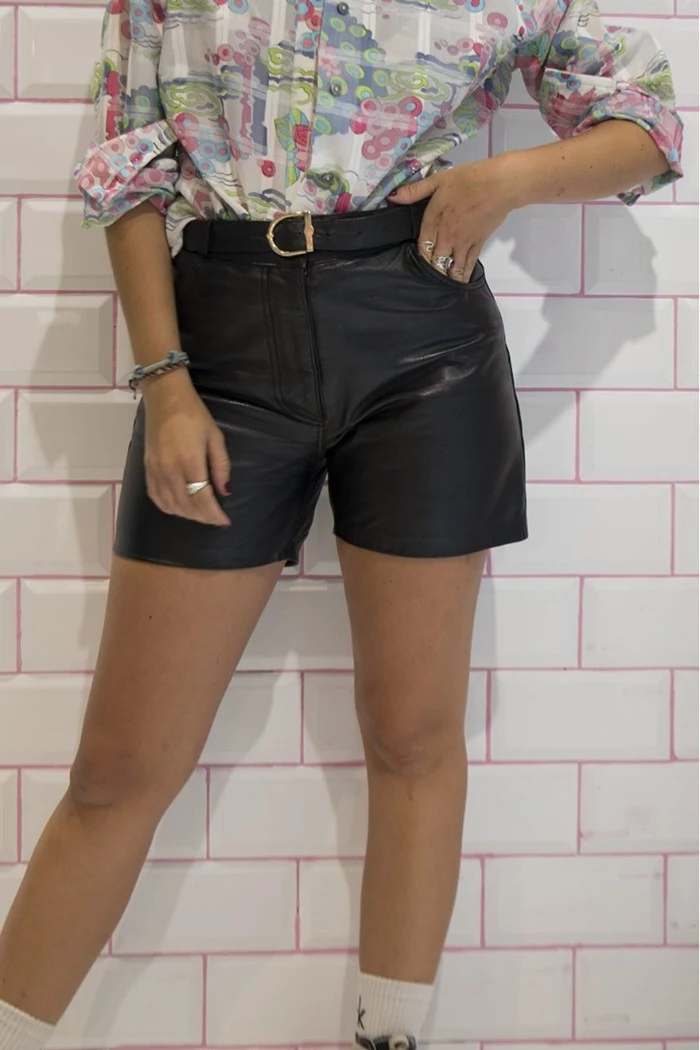
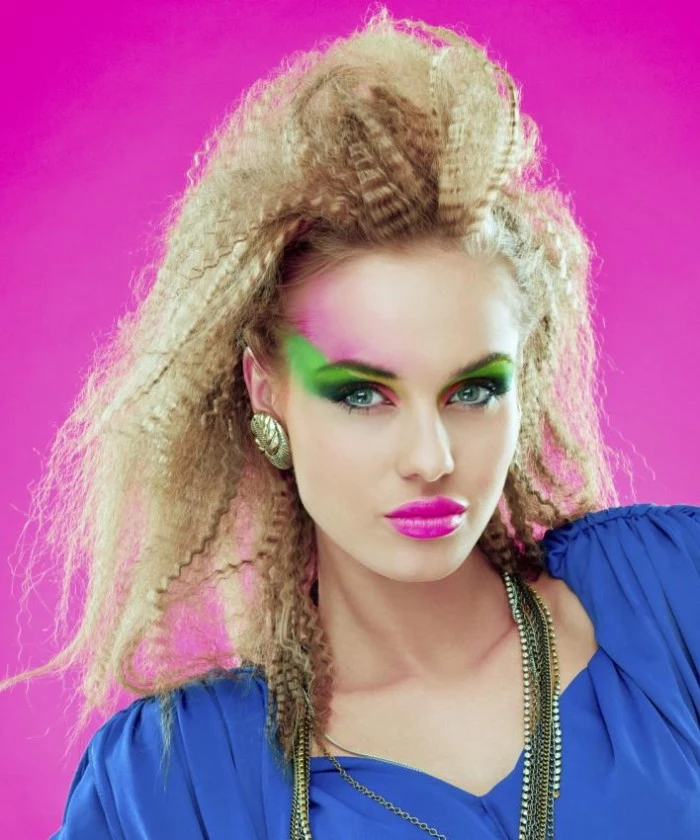
- Boosts a casual outfit with instant structure.
- Creates an iconic, powerful silhouette.
- Can be styled with jeans or worn over a dress.
The secret? The ’80s power blazer. Look for ones with defined, but not cartoonish, shoulder pads and in fabrics like wool, tweed, or even bold-colored linen.
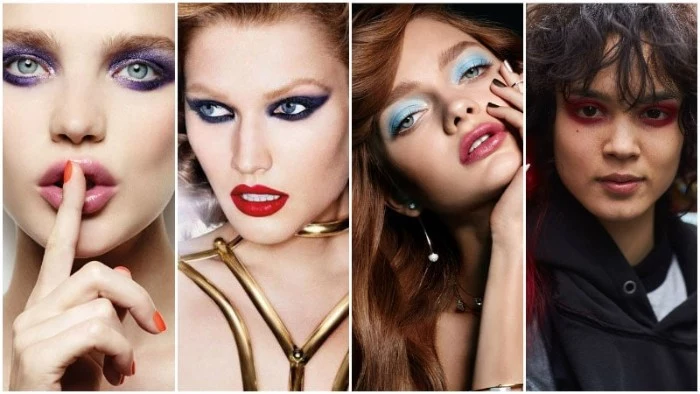
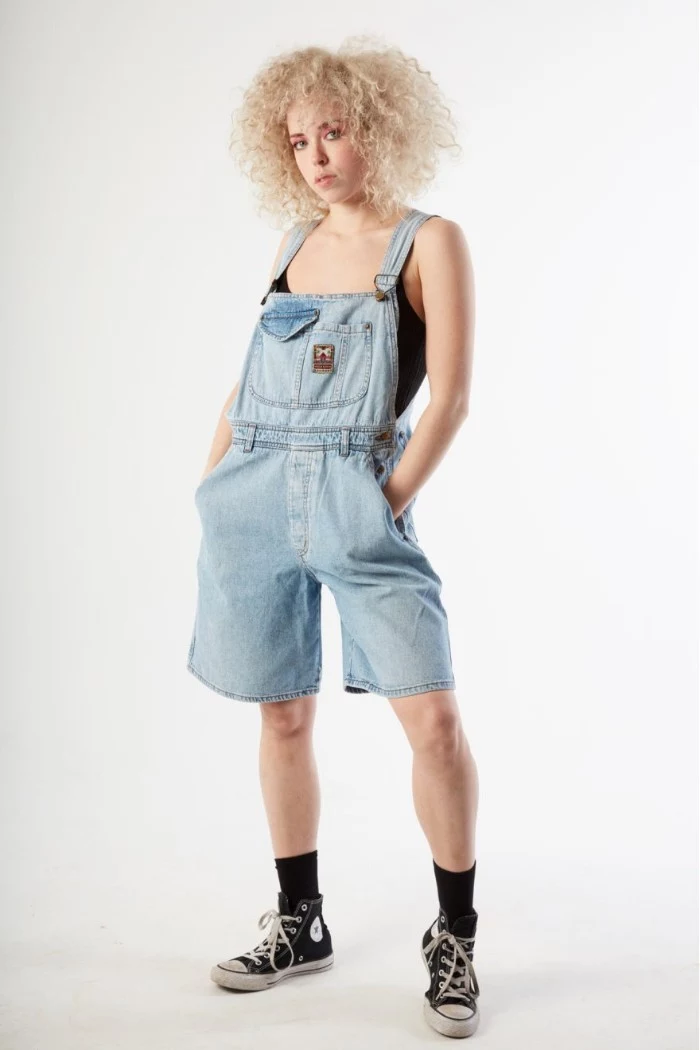
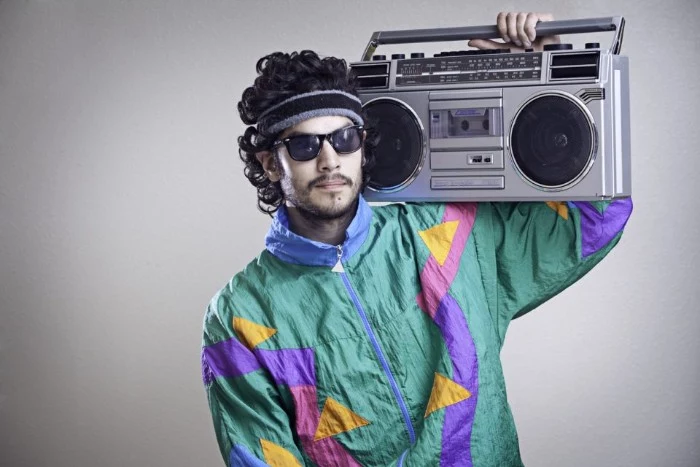
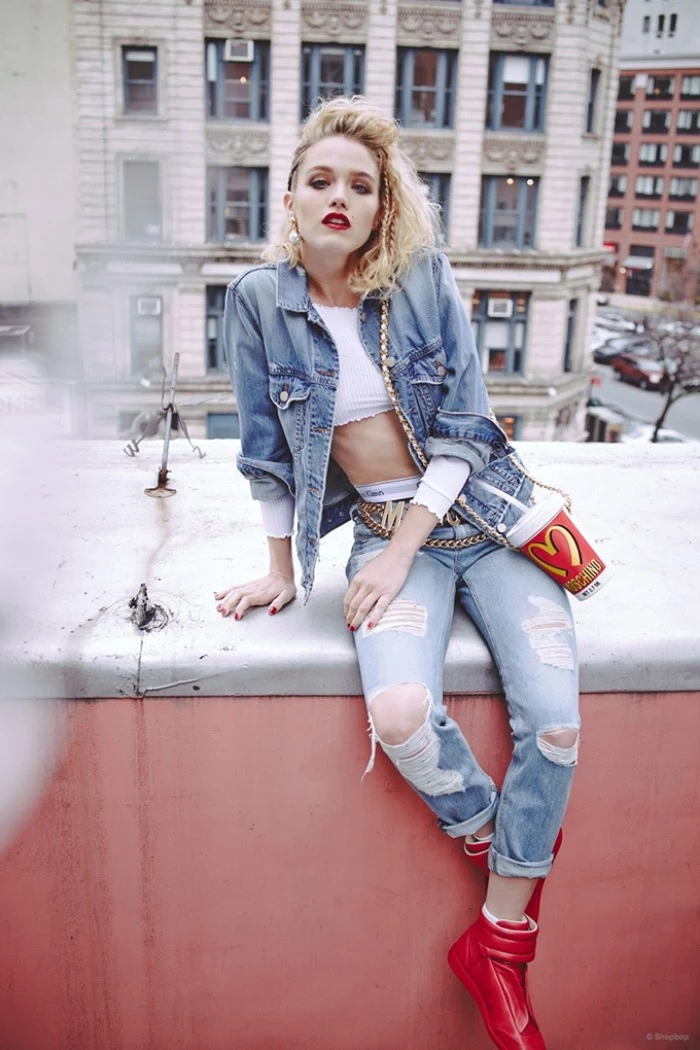
The Memphis Group, a Milan-based design collective, operated only from 1980 to 1987, yet their influence was seismic.
Their signature look—bold geometric patterns, laminate surfaces, and a palette of clashing pastels and primary colors—quickly jumped from furniture to fashion. Those abstract, squiggly-lined blouses and colorful plastic earrings? That’s the spirit of Memphis, a direct rejection of the muted tones of the ’70s.
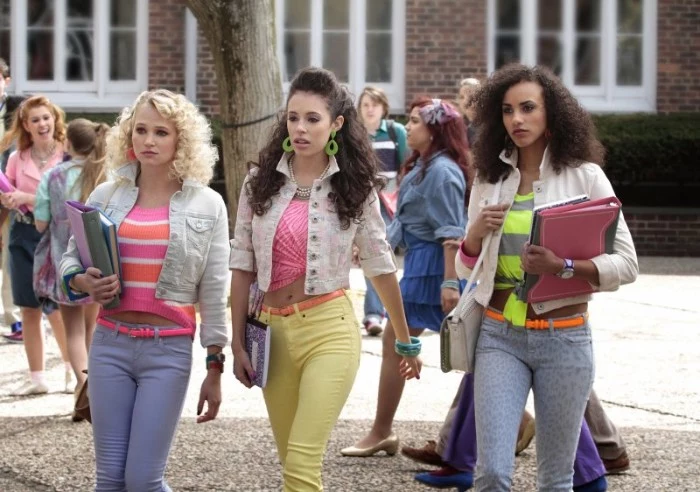
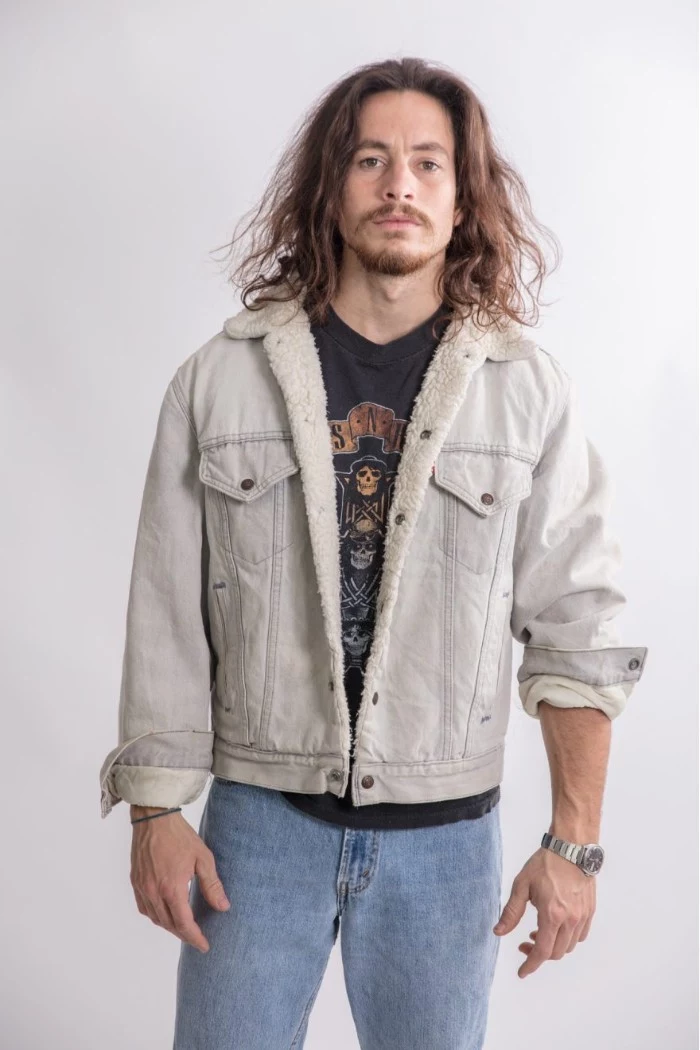
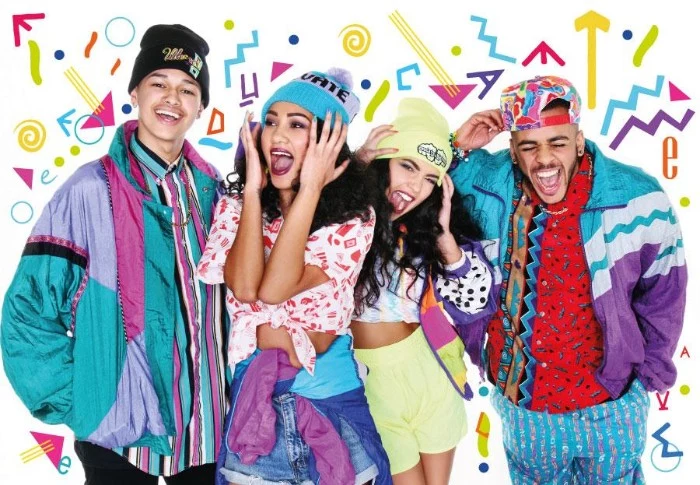
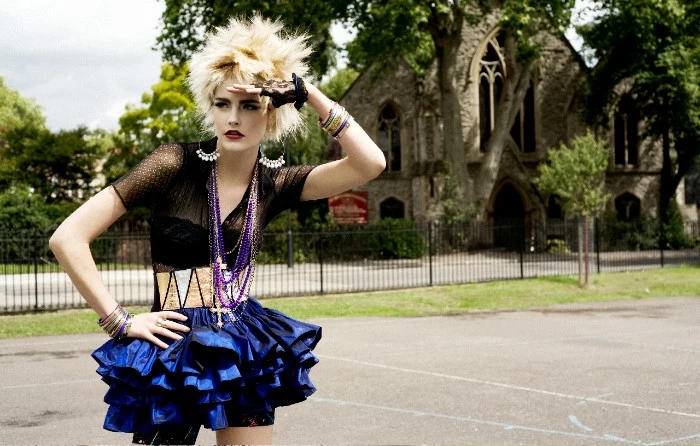
How do I care for a vintage ’80s leather jacket without ruining it?
First, never submerge it in water. For dust or light dirt, a simple wipe-down with a damp cloth is best. To combat that distinct ‘vintage’ smell, air it out indoors for a few days. For conditioning, opt for a product specifically for leather, like Chamberlain’s Leather Milk, but always test it on an inconspicuous area, like the inside lining, first.
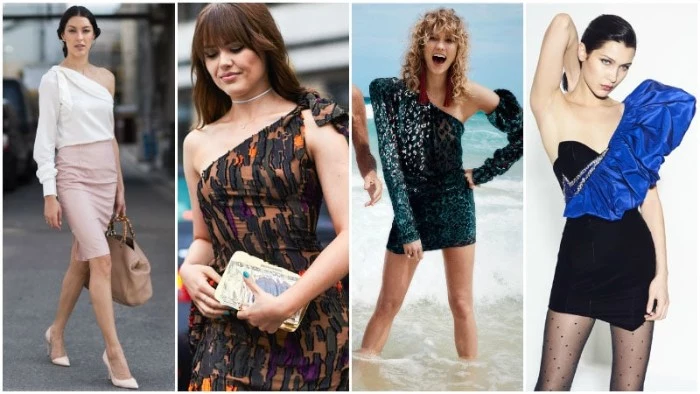
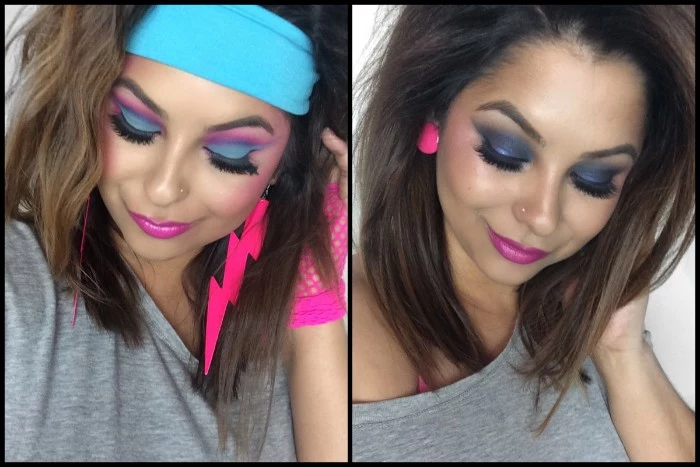
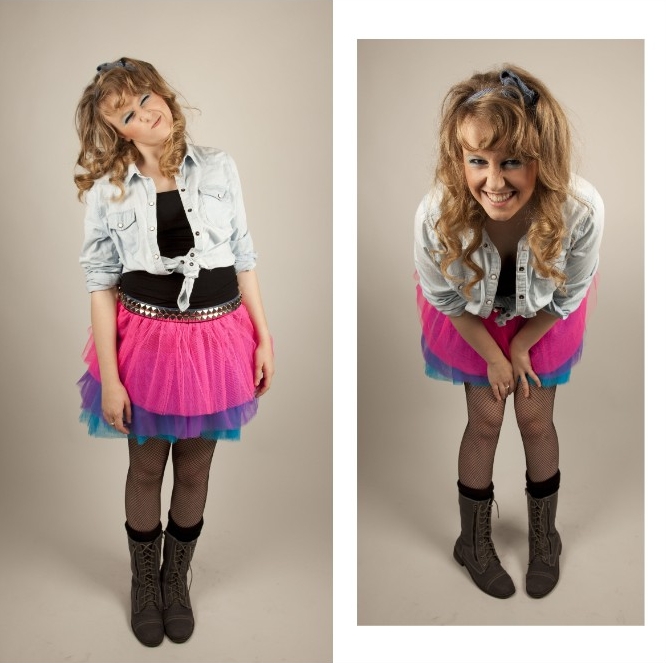
New Wave: Think geometric, asymmetric cuts, often in black and white with a pop of primary color. The look was sleek, futuristic, and heavily influenced by synth-pop bands. Skinny ties were a must.
Post-Punk: More romantic and deconstructed. Look for dark florals, lace, velvet, and oversized, often distressed, sweaters. The vibe, inspired by bands like The Cure, was melancholic and artfully disheveled.
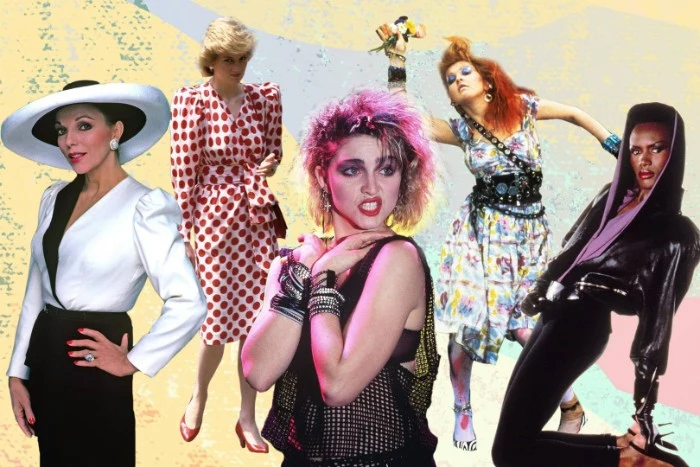
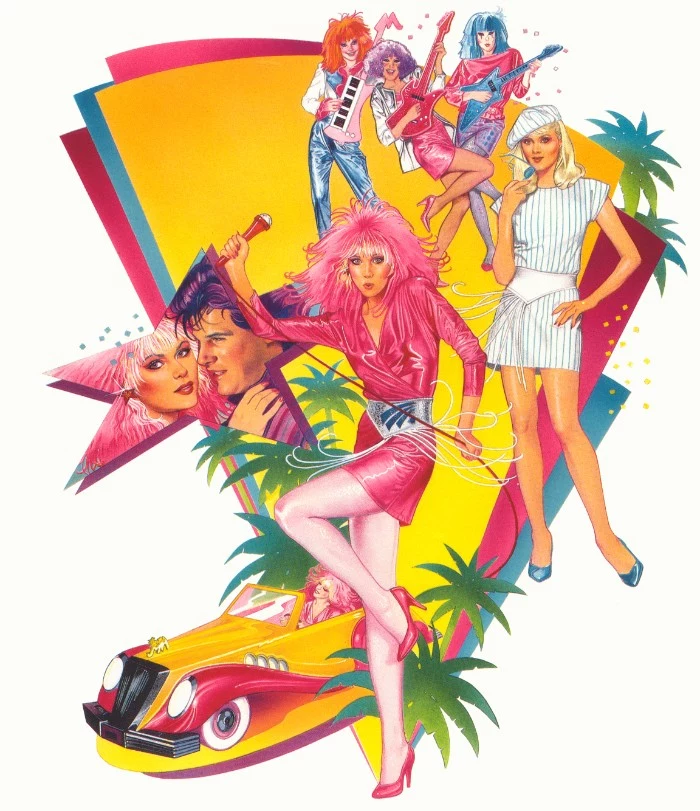
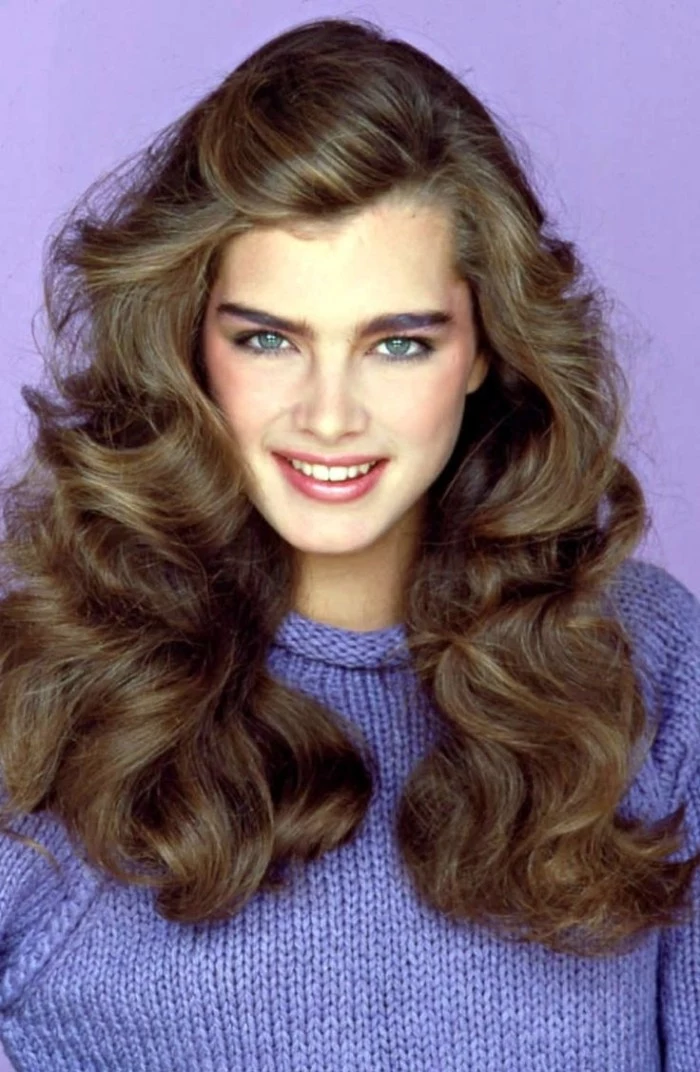

Before you buy that perfect oversized ’80s sweater, give it a quick inspection:
- Gently stretch the cuffs and waistband. Do they spring back? If not, they’ve lost their elasticity and will look sloppy.
- Hold it up to the light to check for tiny moth holes, especially in wool or cashmere pieces.
- Check for heavy pilling under the arms and across the chest, which can be difficult to fully remove.
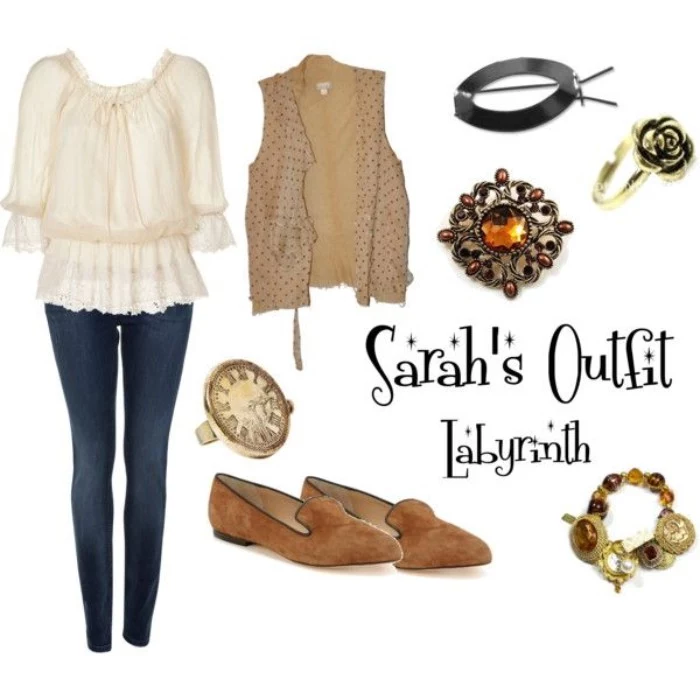
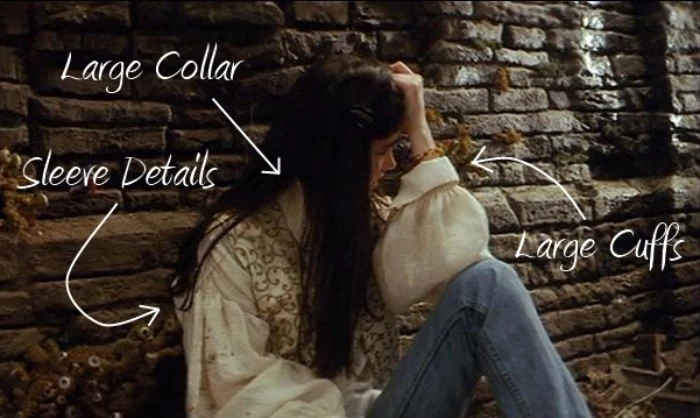
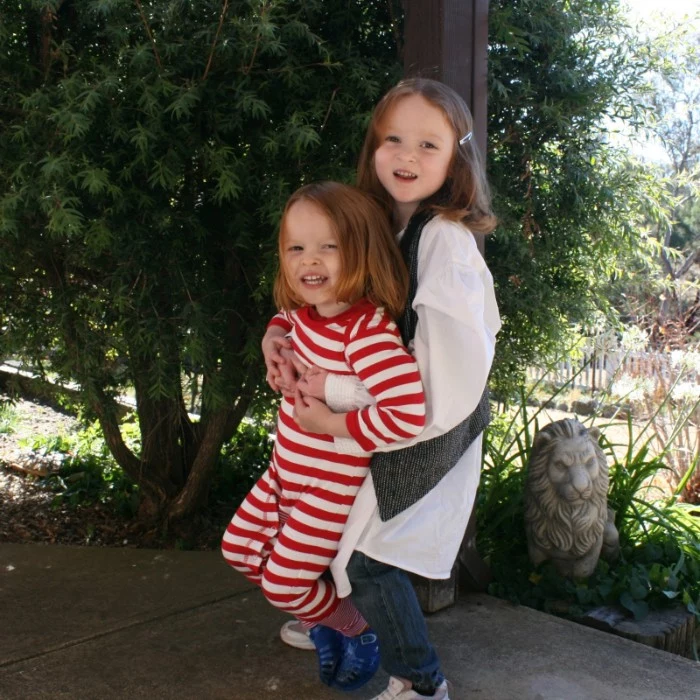
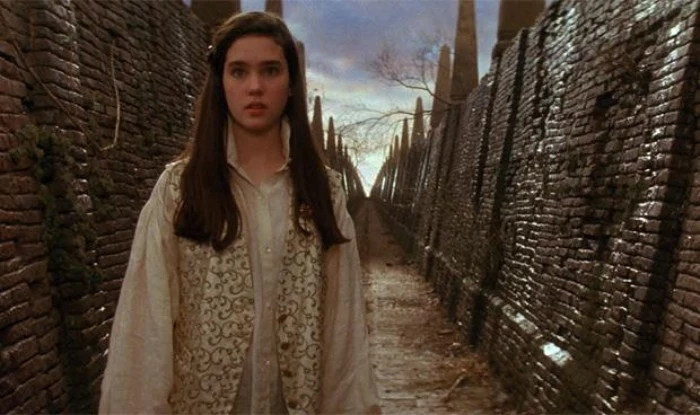
An important detail: The Batwing sleeve, also known as a Dolman sleeve. This design, where the sleeve is cut deep and wide at the shoulder with a tapered wrist, was a hallmark of ’80s blouses and sweaters. It created a dramatic, triangular silhouette that screamed ’80s while offering incredible comfort.
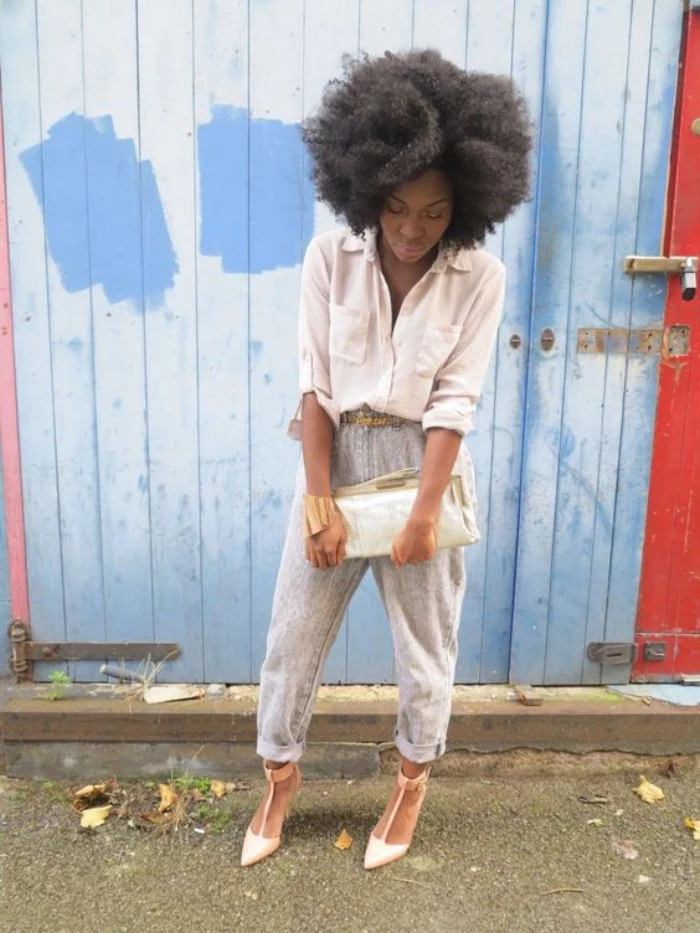

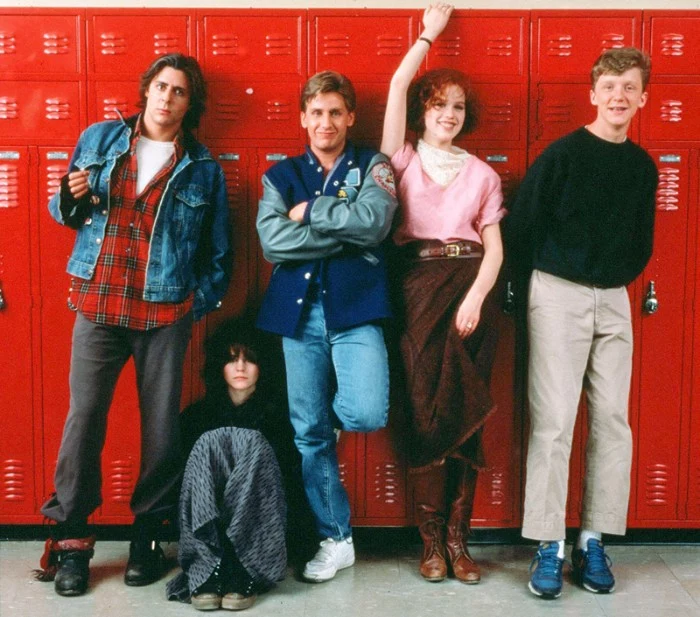
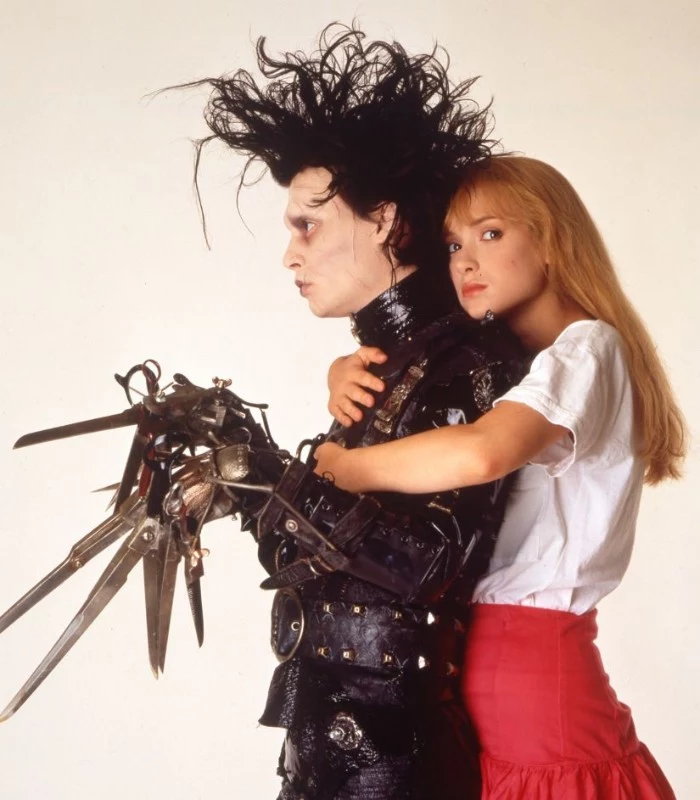
“Choose Life.” “Frankie Say Relax.” “58% Don’t Want Pershing.”
In the 1980s, the slogan T-shirt, pioneered by designer Katharine Hamnett, turned the torso into a political billboard. These bold, block-lettered statements were more than just fashion; they were a form of protest and identity, capturing the decade’s social consciousness in wearable form.

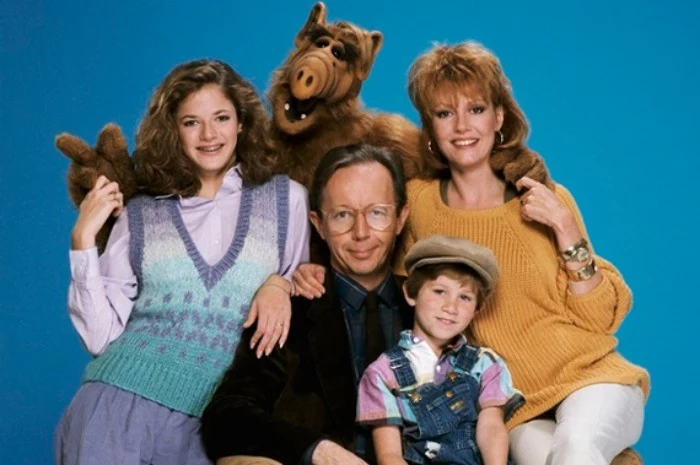
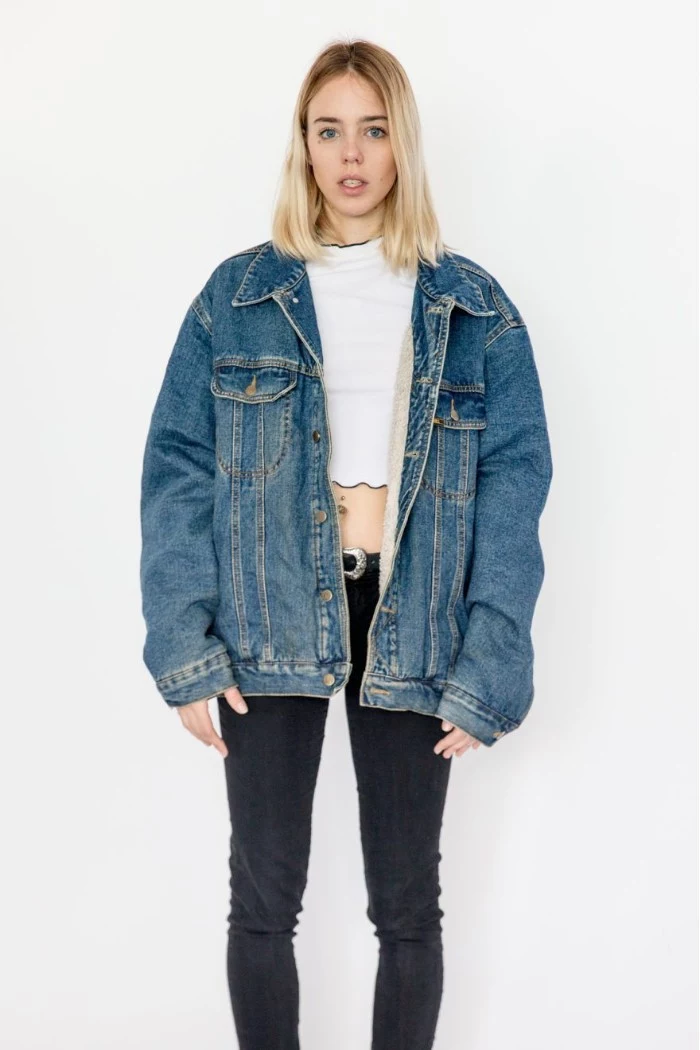
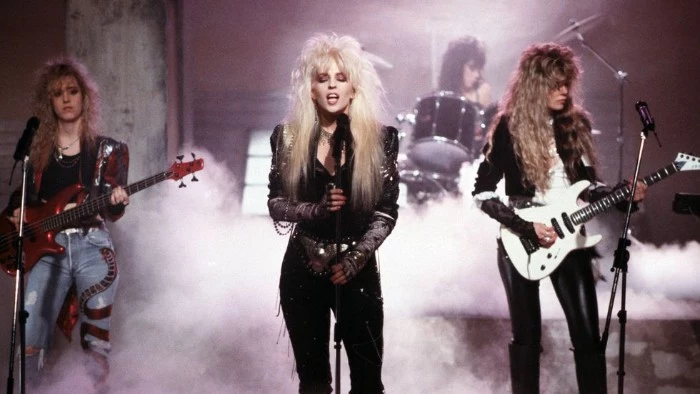
The preppy look, a holdover from the ’70s that exploded in the ’80s, was all about clean-cut, classic brands. An authentic preppy outfit wasn’t complete without a few key pieces:
- A pastel-colored Izod Lacoste polo shirt with the collar popped.
- Pleated khaki trousers or shorts.
- An argyle sweater vest or cardigan, often draped over the shoulders.
- L.L. Bean ‘Duck Boots’ or Sperry Top-Sider boat shoes.
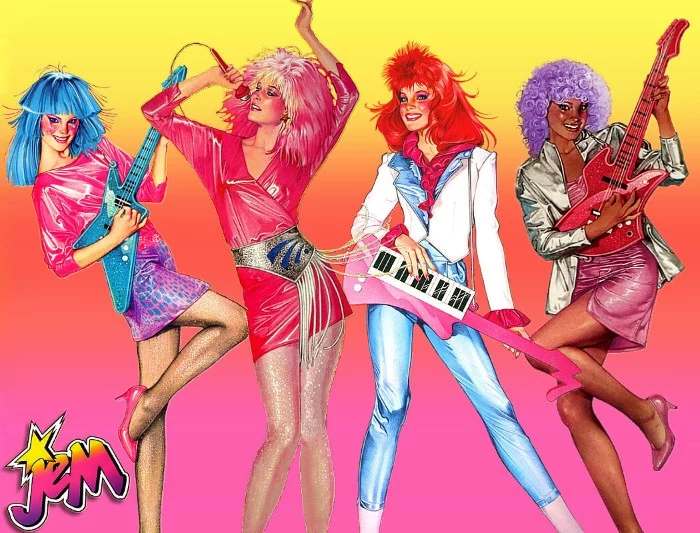
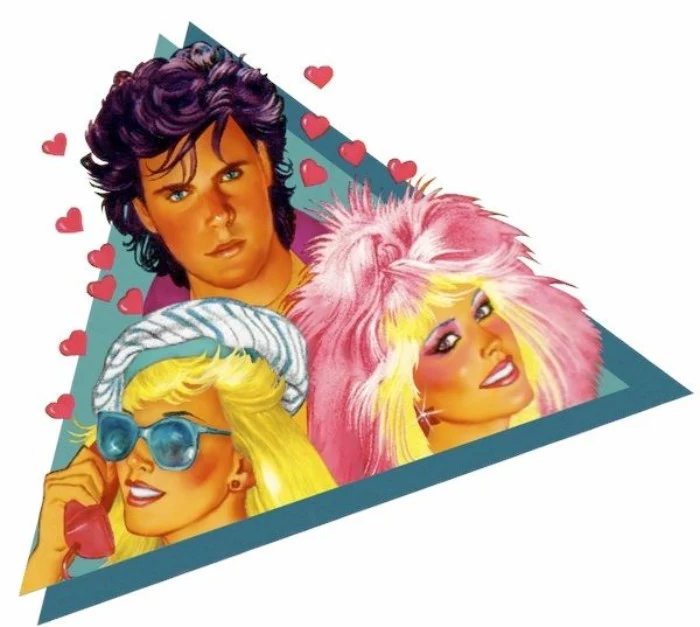
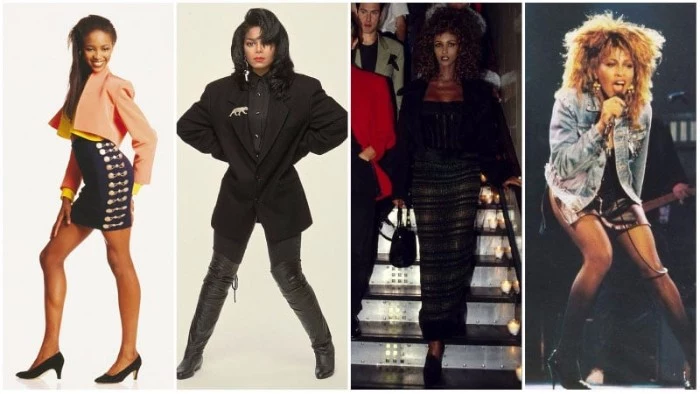
Was all ’80s denim acid-washed?
Not at all. While acid wash is an iconic ’80s finish, it shared the spotlight. Stonewashing created a softer, more evenly faded look. Meanwhile, high-end brands like Guess championed a dark, uniform indigo wash in their famous high-waisted, ankle-zipped jeans, creating a sexier, more polished silhouette that was worlds away from distressed punk styles.
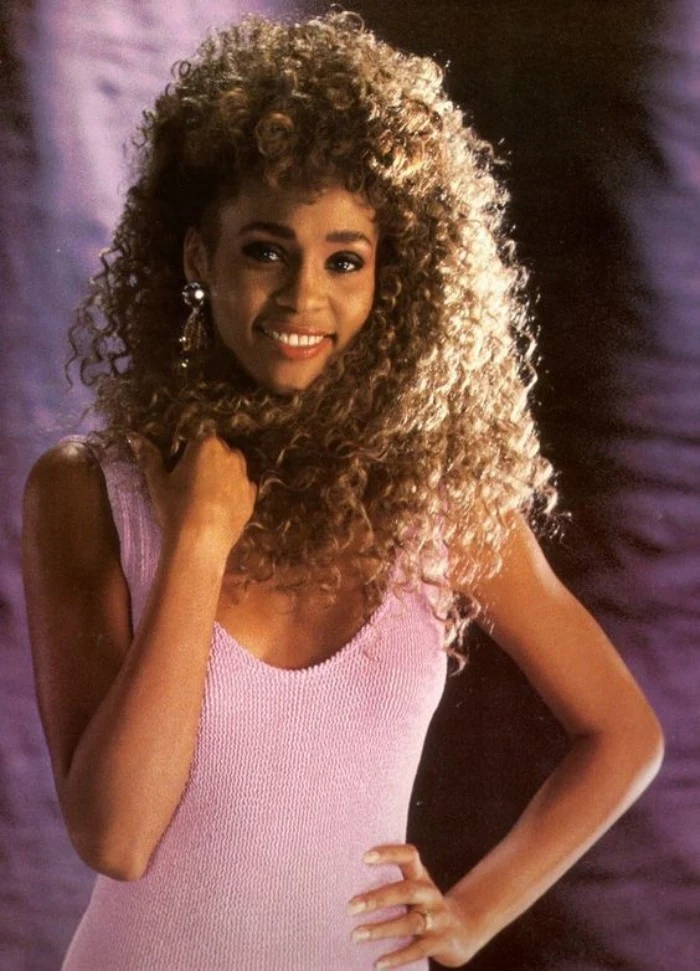
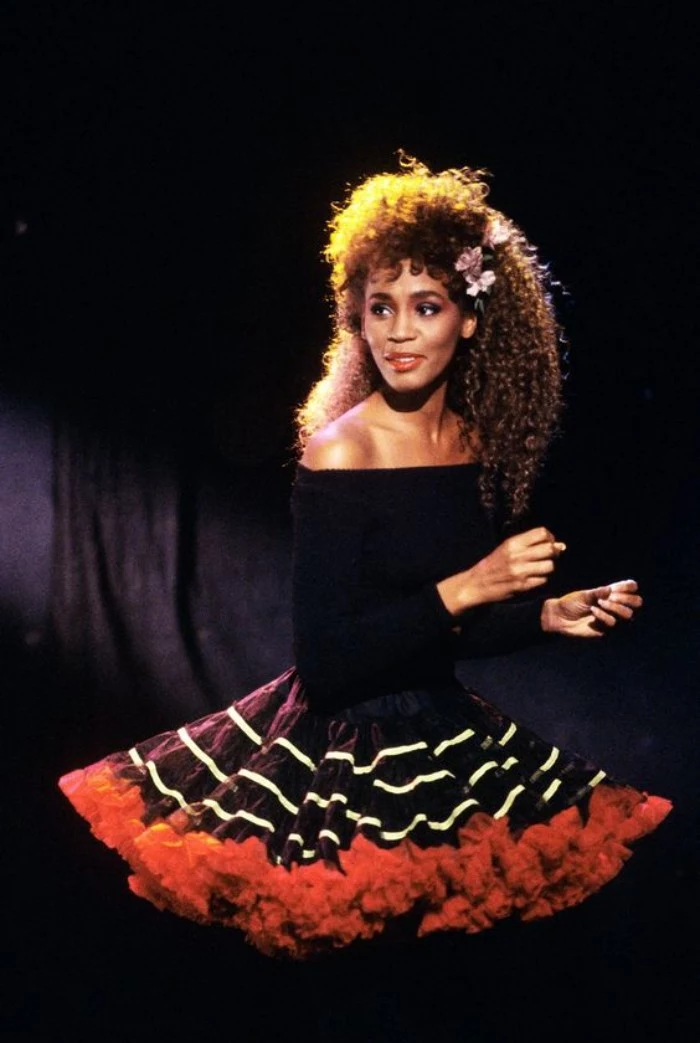

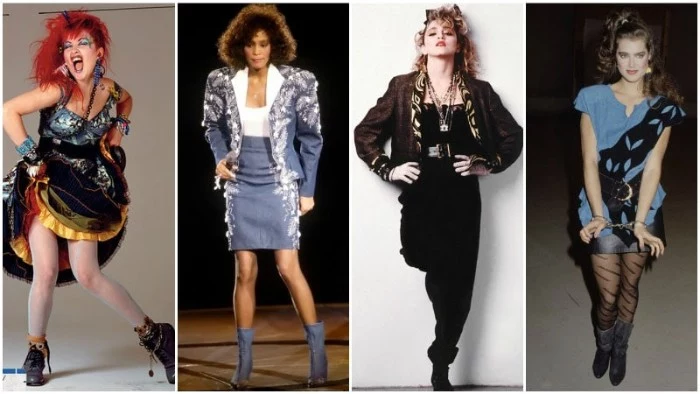
Don’t overlook rayon, the unsung hero fabric of the decade. Often found in blouses and dresses, rayon challis has a unique soft, fluid drape that was perfect for the era’s blousy silhouettes and floral prints. It feels lighter than cotton and breathes better than polyester, making it a surprisingly comfortable vintage find.

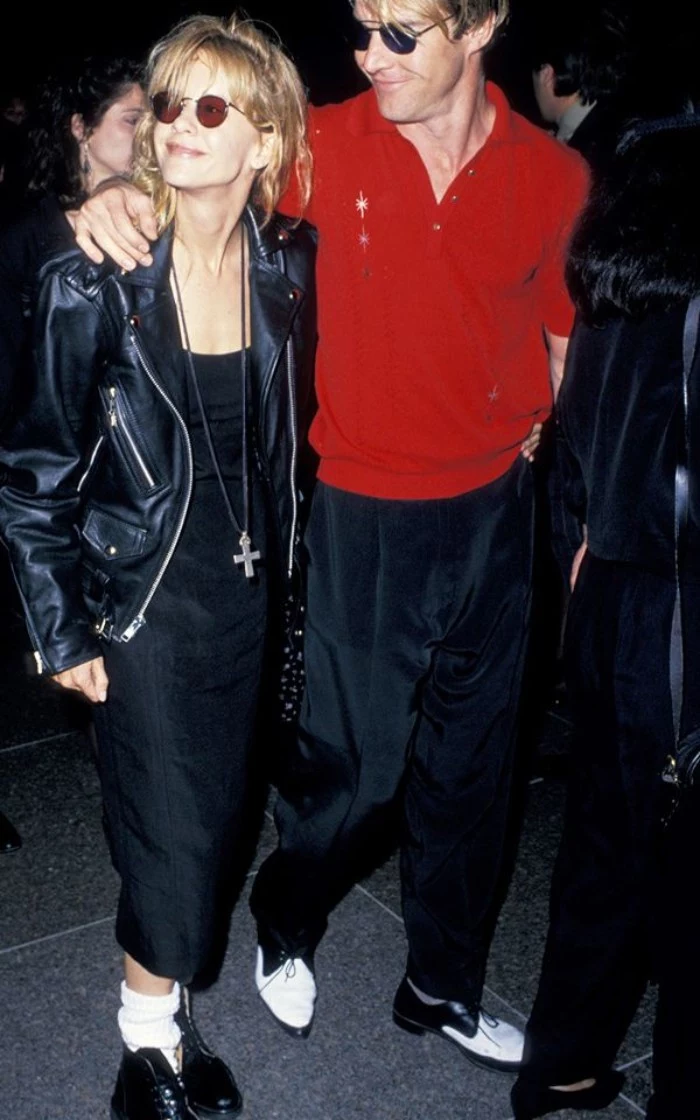
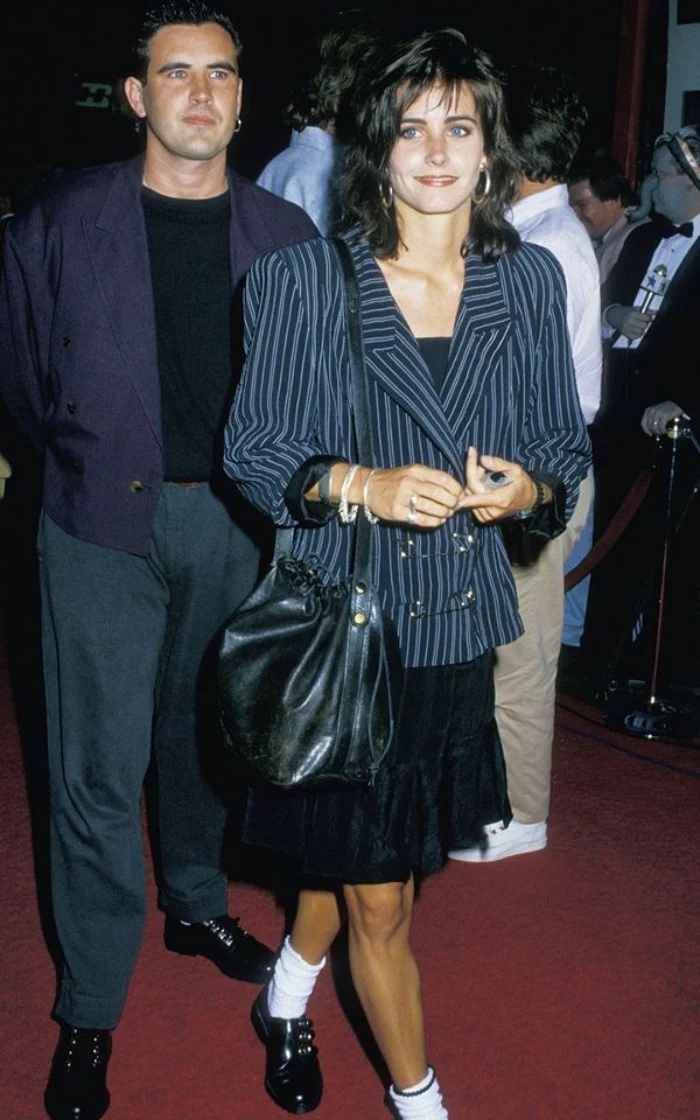
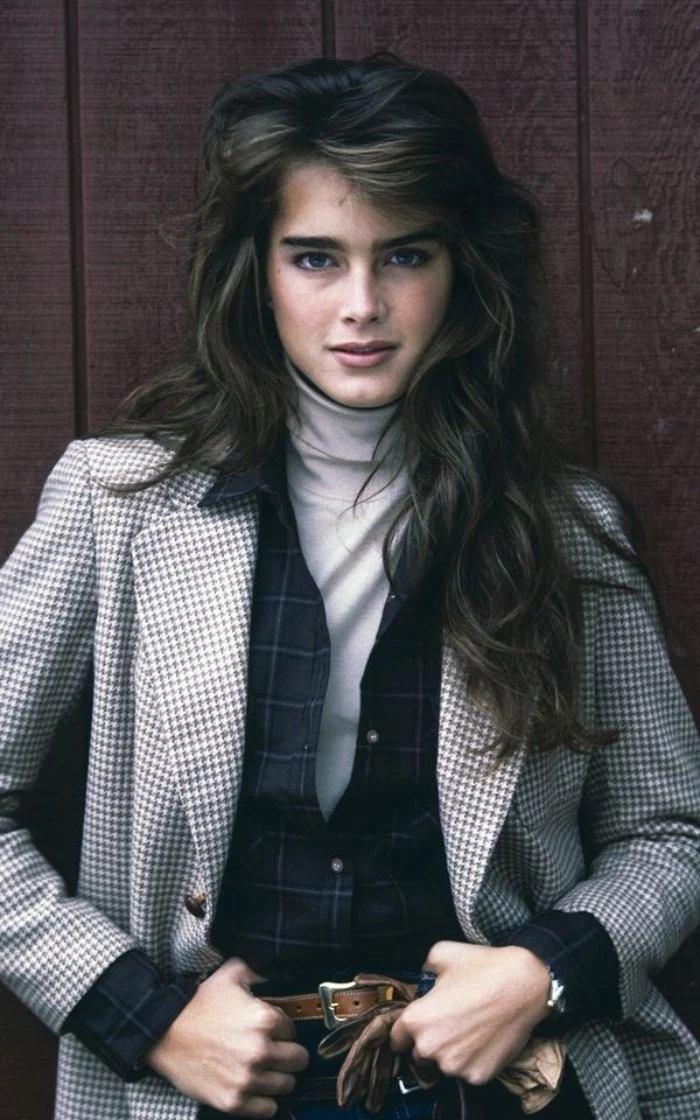
Shoulder Pads: Friend or Foe? If the pads in your vintage find feel too extreme, don’t despair. In most unlined jackets and many blouses, they’re only attached with a few threads at the shoulder seam and can be easily snipped out with small scissors for a more subtle, modern look.
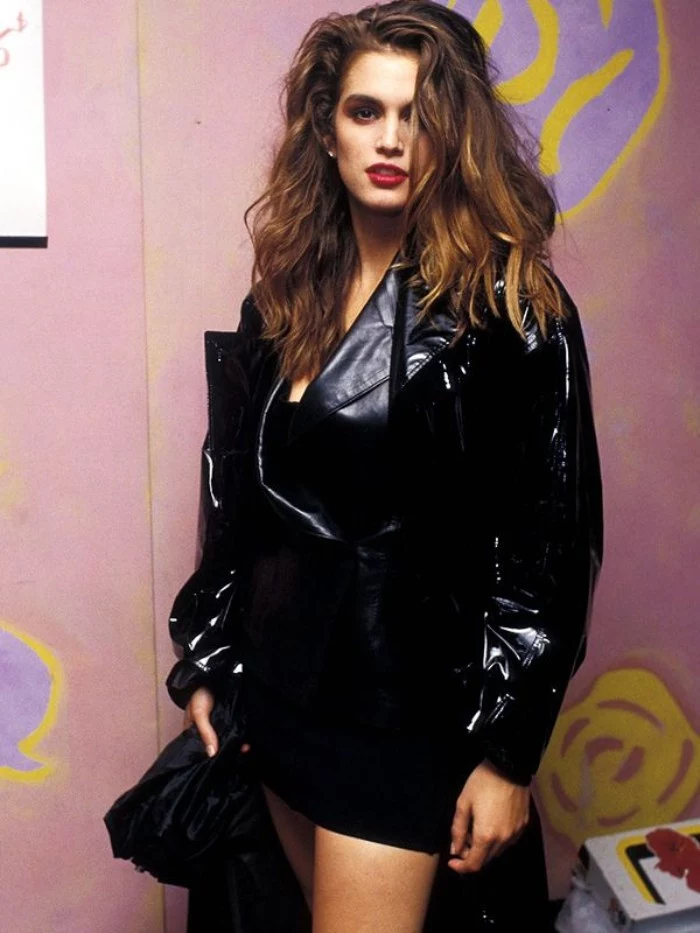
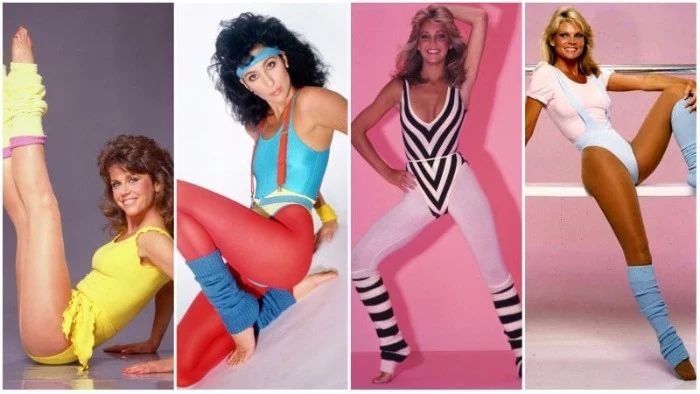
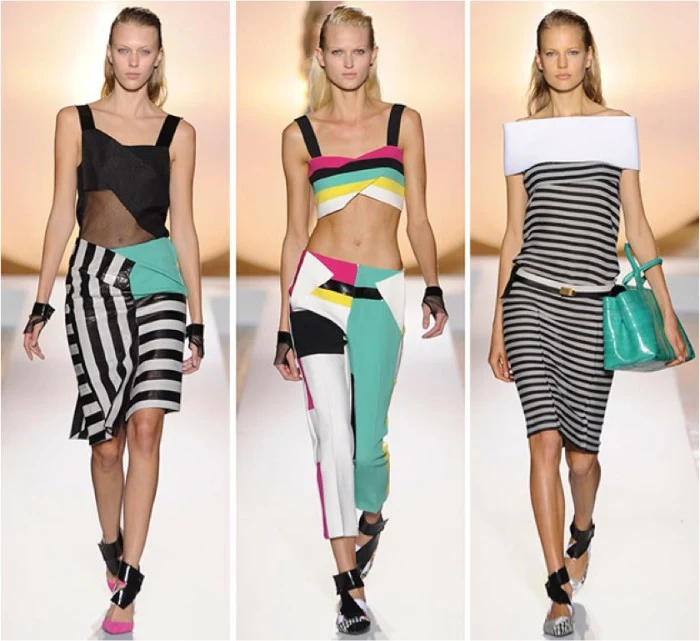
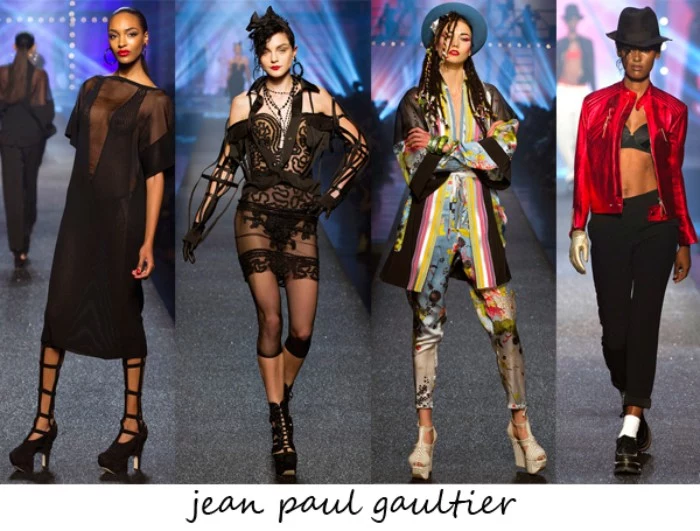
When hunting for ’80s pieces, don’t forget the influence of Japanese avant-garde designers who took Paris by storm. Look for the signatures of designers like Rei Kawakubo (for Comme des Garçons) and Yohji Yamamoto: oversized and asymmetrical shapes, a predominantly black palette, and a beautifully deconstructed or unfinished feel. These were the intellectual, art-gallery alternative to power suits.
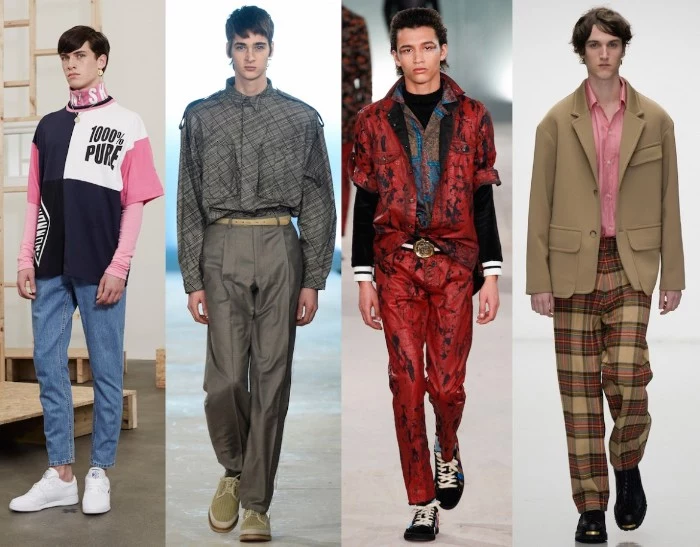
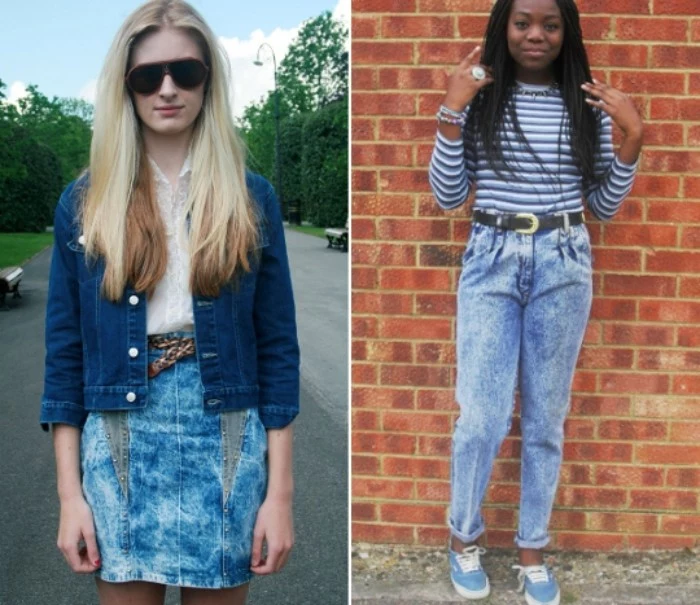
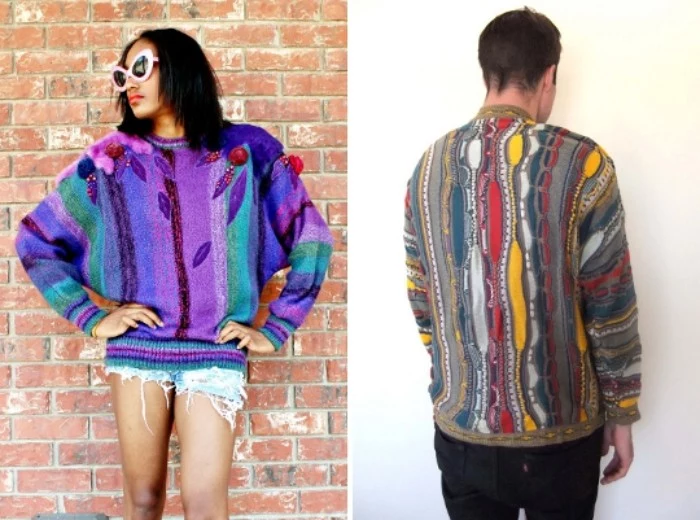

- Lightweight and swishy.
- Inexpensive and widely available in thrift stores.
- Surprisingly durable.
The secret? Parachute pants. Made from nylon, this breakdancing staple crossed over into mainstream fashion, prized for its unique texture and comfort. They are pure ’80s nostalgia.
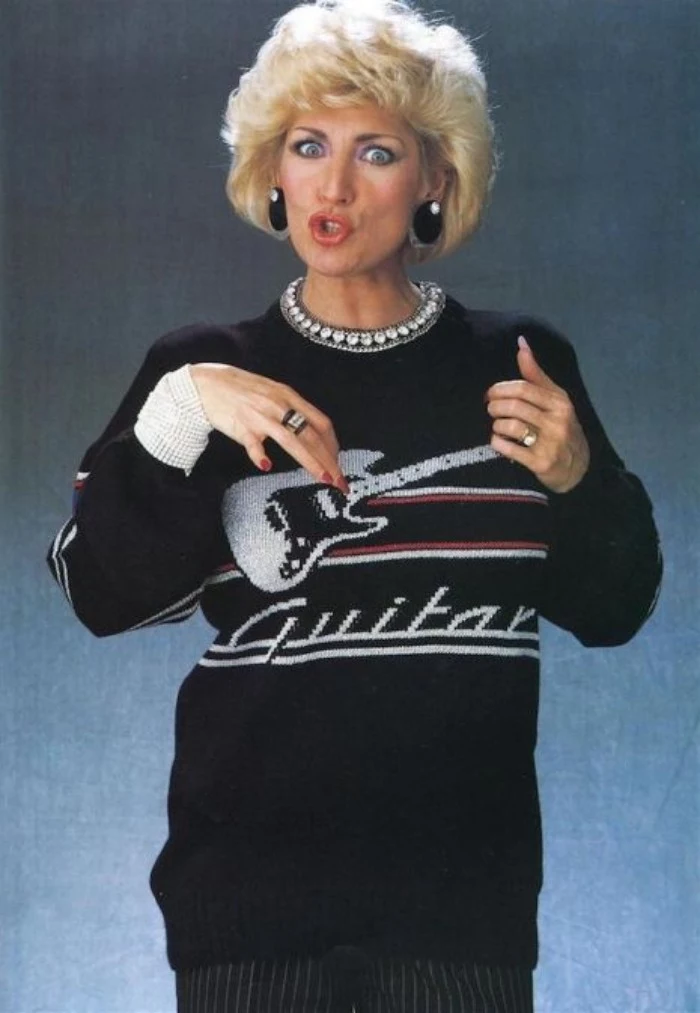

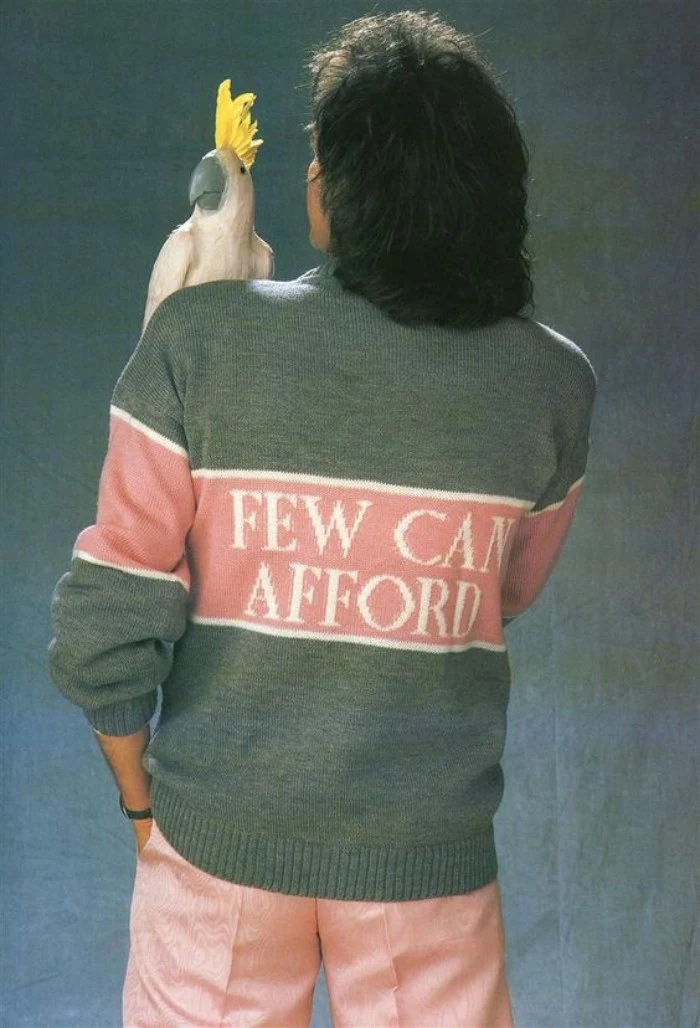
Are vintage ’80s clothes a sustainable choice?
Absolutely. Choosing a vintage garment is one of the most eco-conscious shopping decisions you can make. It keeps a perfectly good piece of clothing out of a landfill, bypasses the water and energy consumption of new manufacturing, and celebrates craftsmanship designed to last longer than a single season.
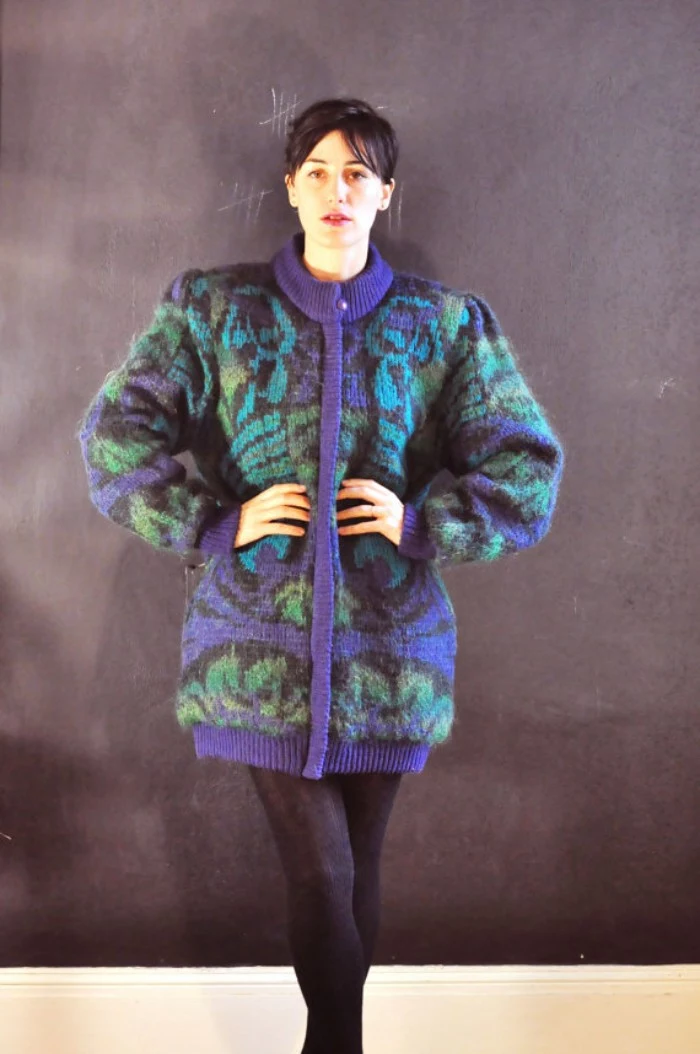
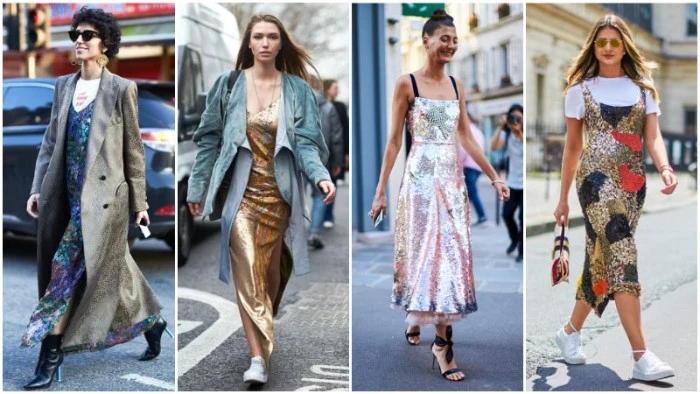
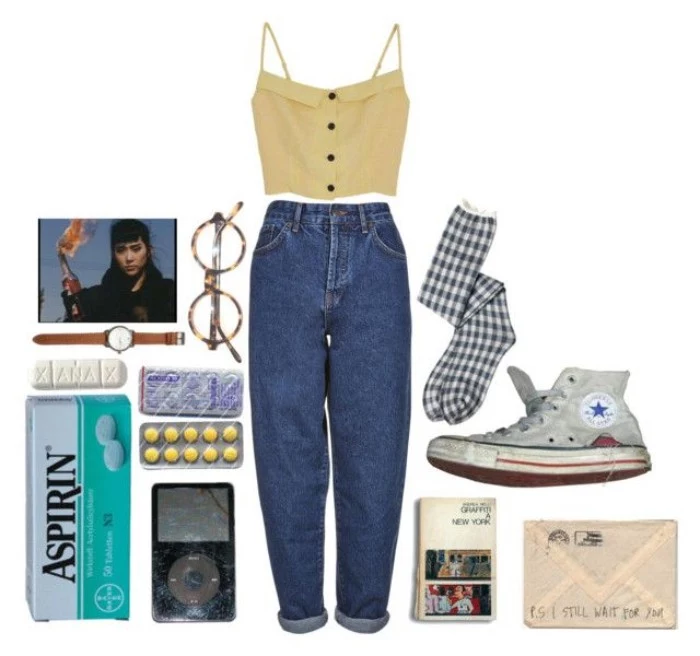
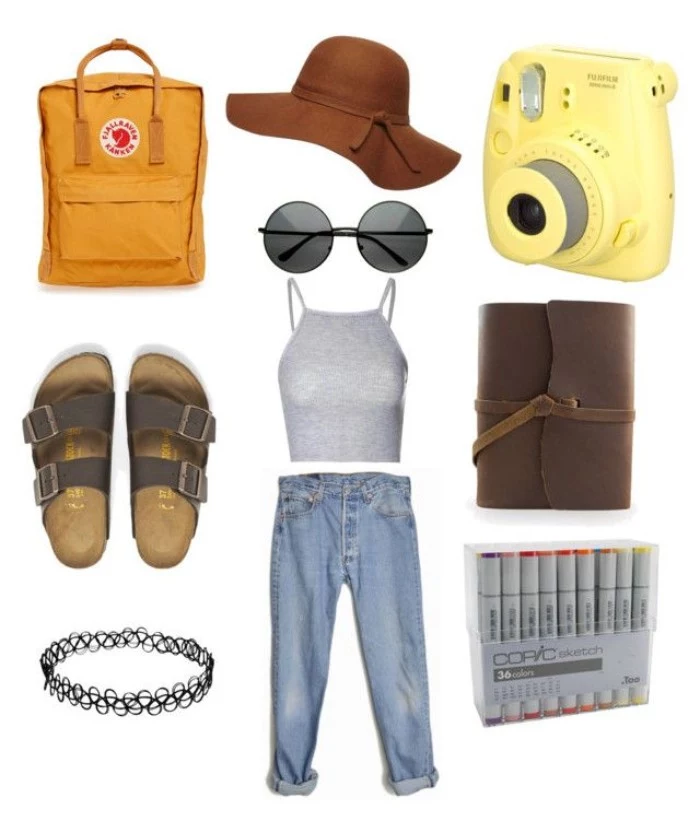
By 1985, United Colors of Benetton had over 1,000 stores in Europe and opened its first flagship on Fifth Avenue in New York.
The brand’s success was built on more than just colorful knitwear; its groundbreaking ad campaigns celebrated diversity and global unity, making a Benetton sweater a symbol of youthful optimism and ’80s-style multiculturalism.
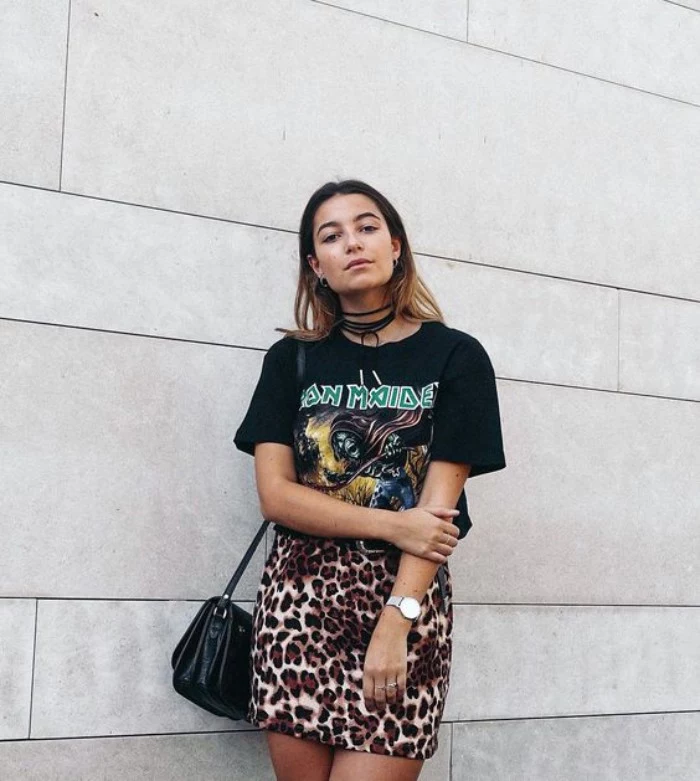
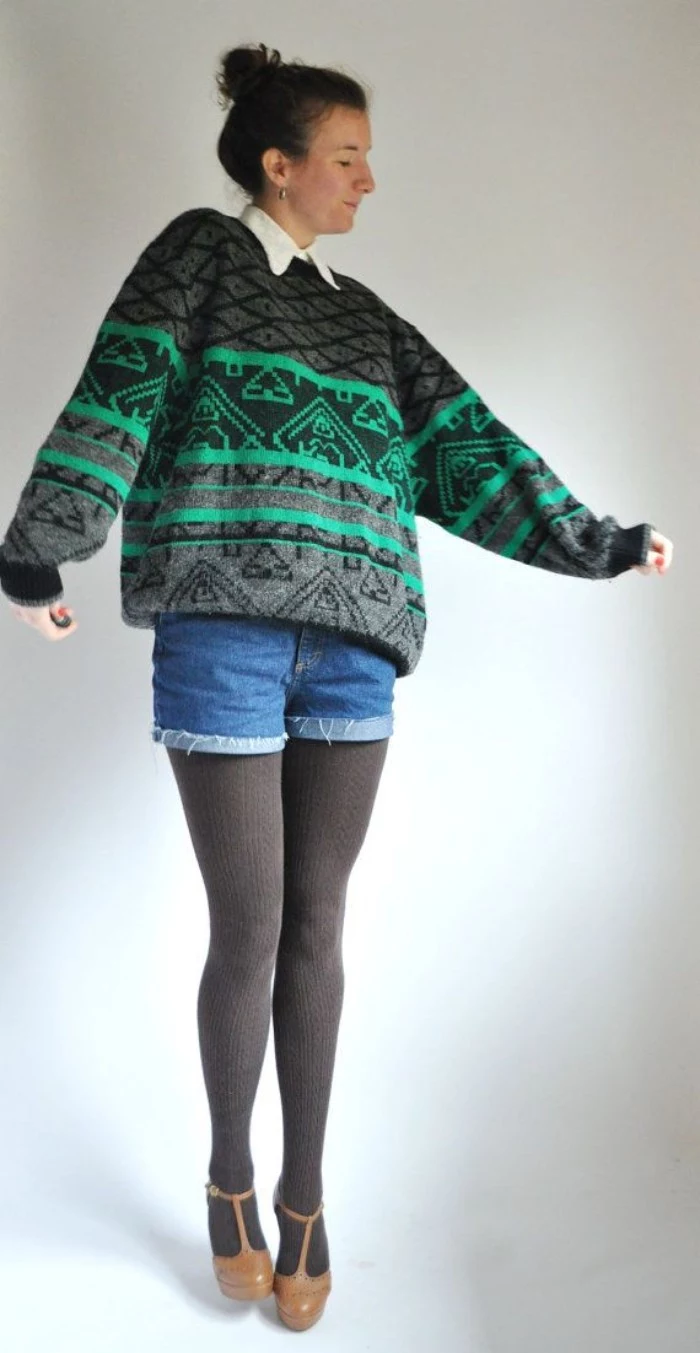
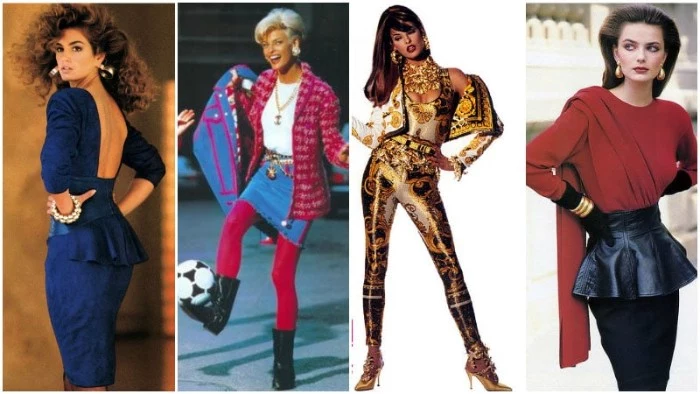
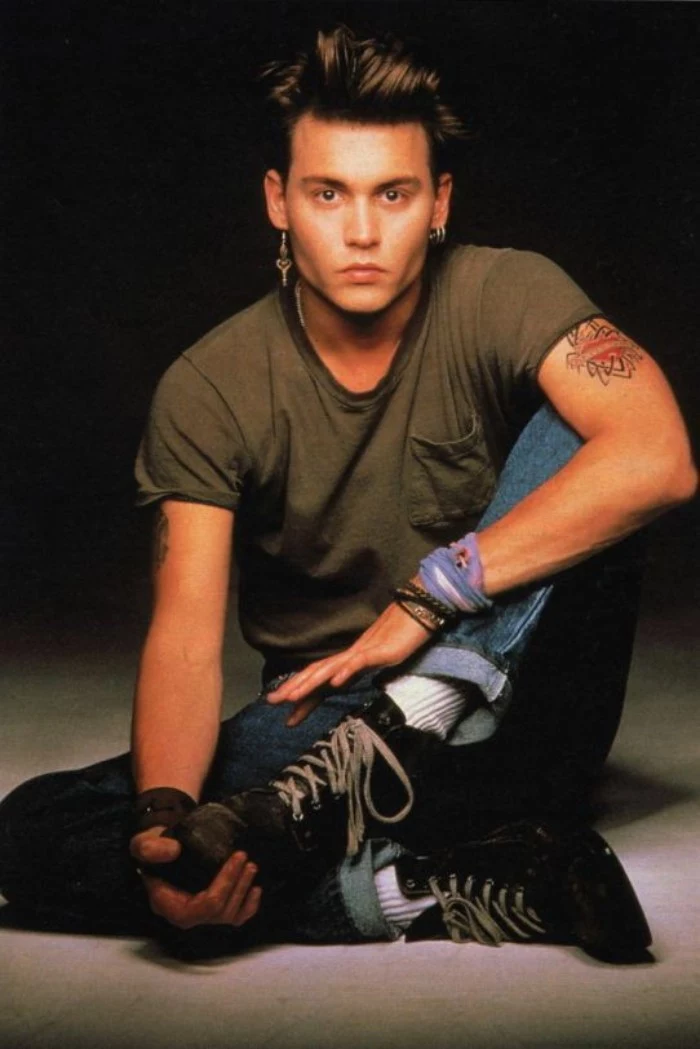
A quick way to inject an ’80s feel without a full costume is through simple styling tricks:
- Try
Thrift Store Digging: Offers the thrill of the hunt and rock-bottom prices. You’ll need patience and a good eye to sift through racks, but the reward is a truly unique find that no one else has.
Curated Vintage Shop: Higher prices, but the work is done for you. Garments are pre-selected for quality and style, cleaned, and often repaired. Perfect if you’re looking for a specific item or are new to vintage.
The key to wearing an oversized ’80s sweatshirt or sweater today is balance. To avoid looking swamped, pair it with modern, slim-fitting bottoms like skinny jeans or leggings. Alternatively, embrace the volume: cinch the waist with a wide belt and wear it as a mini-dress with combat boots for a contemporary edge.
Mistake to Avoid: Treating it like a costume. Unless you’re going to a theme party, avoid wearing a full head-to-toe ’80s ensemble. The modern way is to integrate one standout piece—a jacket with great shoulders, a pair of high-waisted jeans, or a bold printed blouse—into your otherwise contemporary wardrobe.
The decade’s sound had a huge impact on its look. The rise of hip-hop brought in Adidas tracksuits, Kangol hats, and oversized gold chains. On the other side of the spectrum, the synthesized sounds of New Wave and goth were paired with black eyeliner, skinny leather ties, and silver jewelry. The music you listened to was often written all over your clothes.
The Body Map collective, founded in 1982 by Stevie Stewart and David Holah, created clothes described as
Don’t be afraid of the
Early ’80s: The aesthetic often carried a softer, more romantic influence from the late ’70s. Think prairie dresses by brands like Gunne Sax, frilly New Romantic blouses, and a softer pastel palette.
Late ’80s: The look became sharper and more graphic. Neon color-blocking, body-conscious Lycra, and the influence of acid house culture created a much harder, more energetic edge as the decade closed.
Feeling the fabric is key. An authentic Esprit blouse from the mid-80s often has a crisp, substantial feel to its cotton, while a Members Only jacket has a distinctively thin, slightly shiny polyester/cotton shell. A vintage concert tee will be paper-thin and incredibly soft. Trust your hands—they can often detect a modern reproduction before your eyes do.
